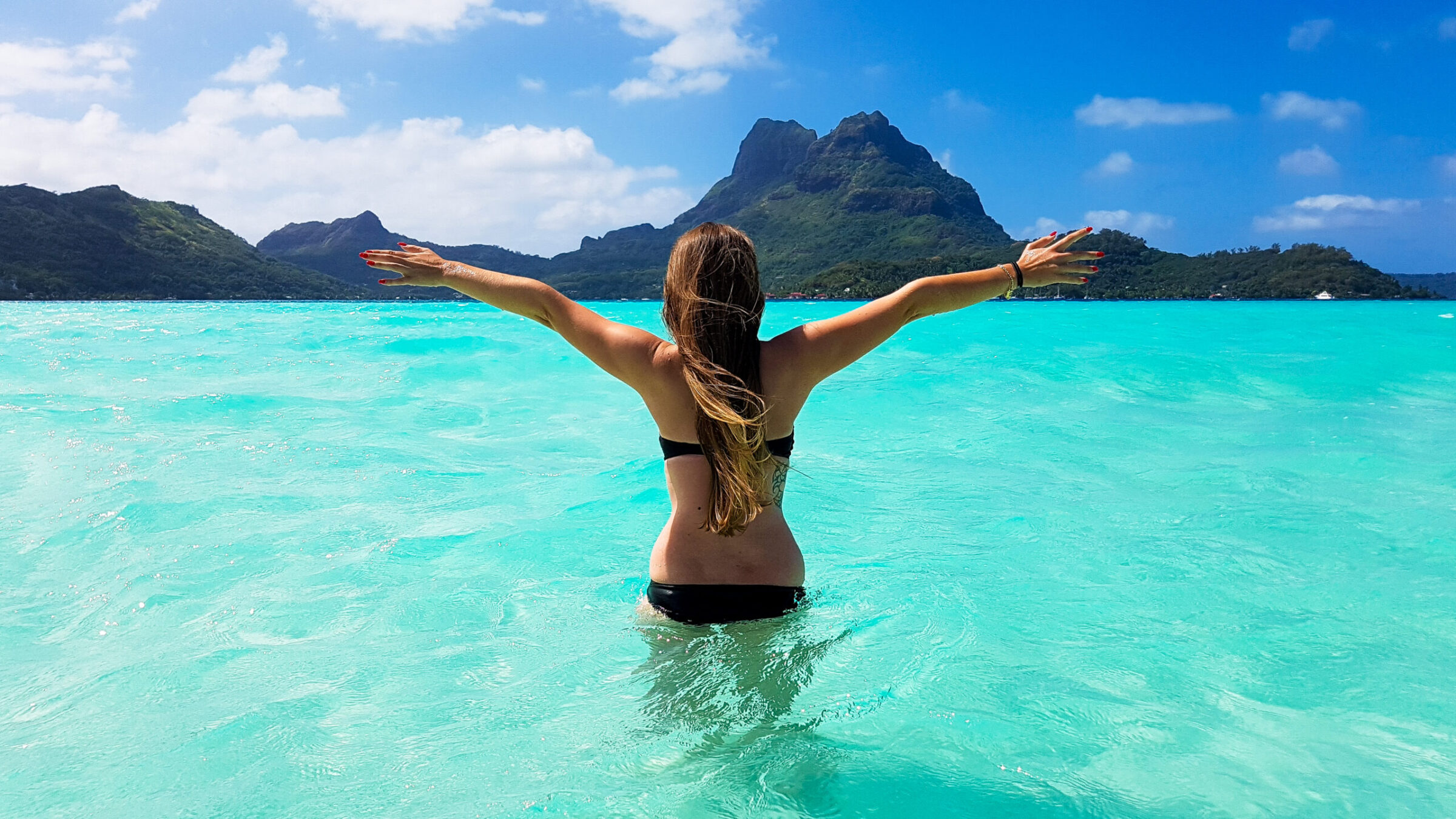
The ultimate West Canada Guide

Everything you need to know for you upcoming adventure to…Canada!
Canada is a perfect place for road trips. You can drive for hours and and still feel like you haven’t seen enough. o this day, it remains one of my absolute favorite travel destinations. Along the way, you’ll pass towering mountains, crystal-clear blue lakes, and, if you’re lucky, even catch a glimpse of wildlife in its natural habitat.
One of the most frequently asked questions about traveling to Canada is whether to explore the west or the east. While I can’t speak much for the eastern side (yet!), I have plenty of experience and love for the west.
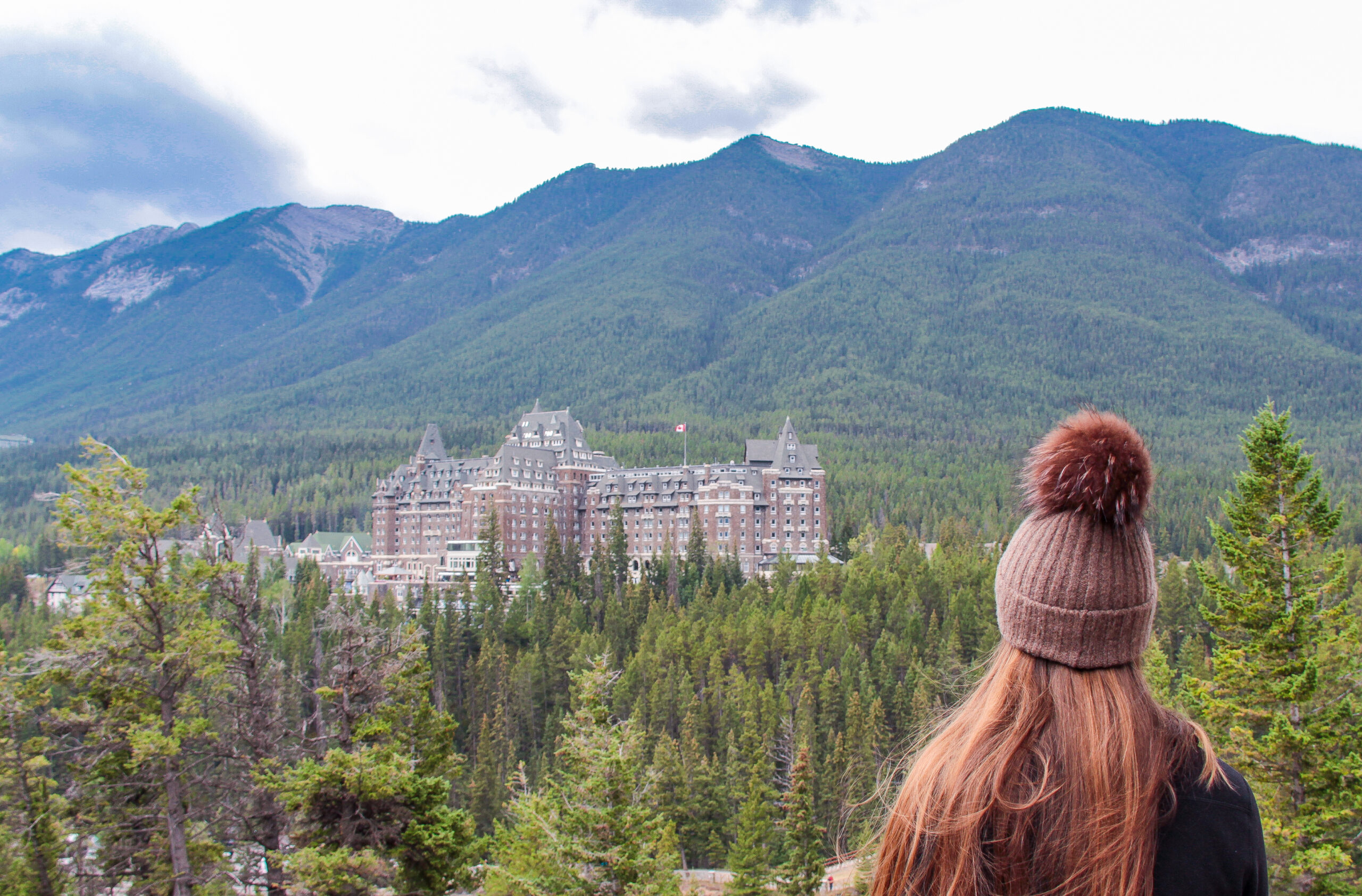
Canada has so much to offer that it’s impossible to see everything in one trip—so it’s best to decide what you really want to experience without putting too much pressure on yourself. Before diving into all the amazing things to do in Western Canada, here are some practical tips you should know before your visit.
Best time to go?
It all depends on what kind of adventure you’re looking for! If you’re into snow and winter activities, then visiting during the colder months is a must. But for most outdoor activities like hiking, climbing, fishing, or kayaking, the summer months are definitely the best time to go. The weather is more predictable, and you’ll have better access to the national parks and scenic routes.
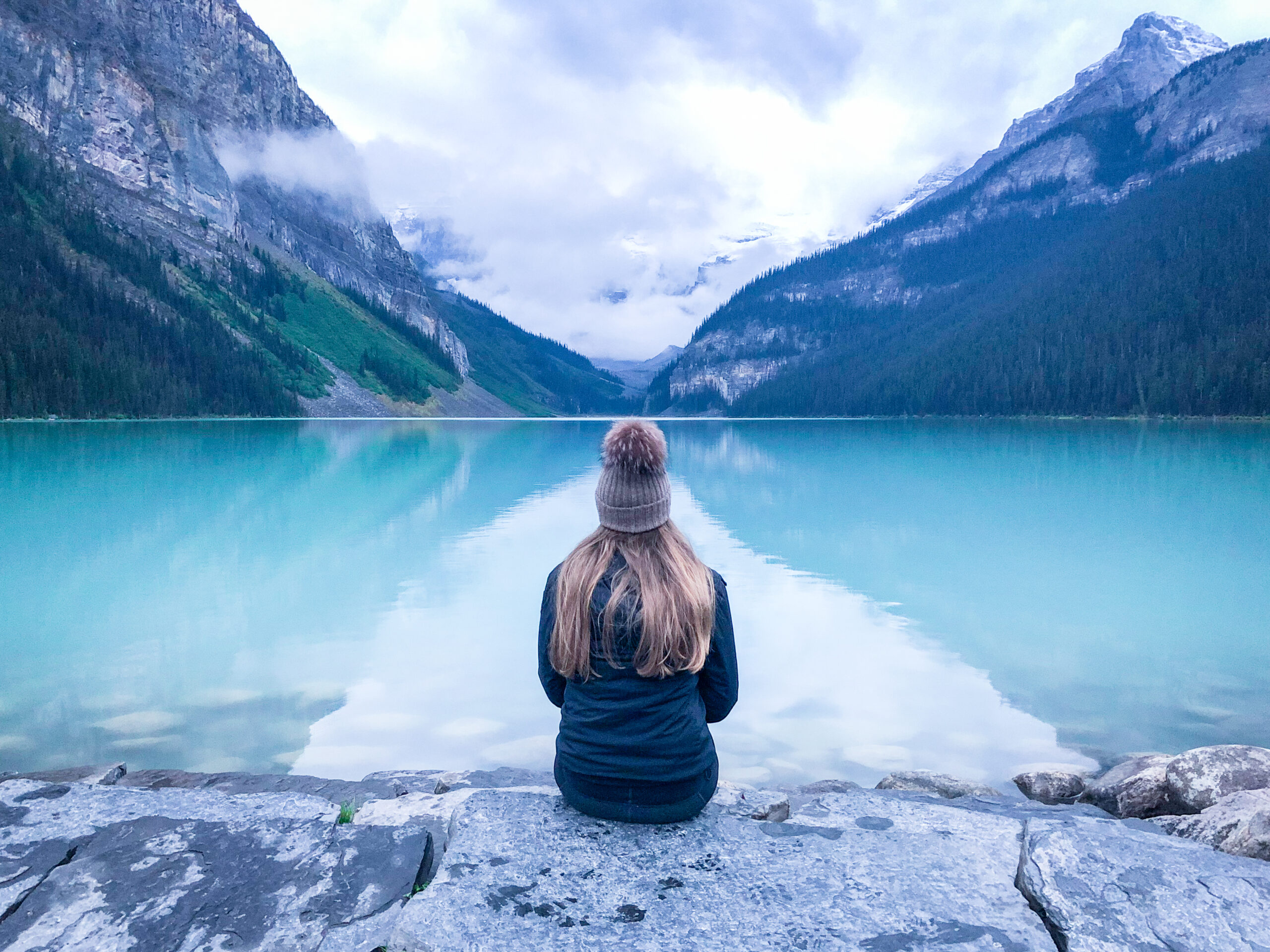
We traveled to Canada in late August and early September, which is normally a great time to visit. It’s less crowded than in June or July, but everything is still open and accessible. Unfortunately, we got caught in a cold front that dropped the temperatures by almost 10 degrees! So, all in all, you can never be completely sure what kind of weather you’ll get. Canada likes to keep you on your toes. It can even start snowing at any time, so be prepared for anything!
How to get there?
When planning a road trip to the Canadian Rockies, you have two main options for starting your adventure: Calgary or Edmonton. Both cities are great gateways to the mountains—it’s just a matter of what kind of route and experience you’re after!
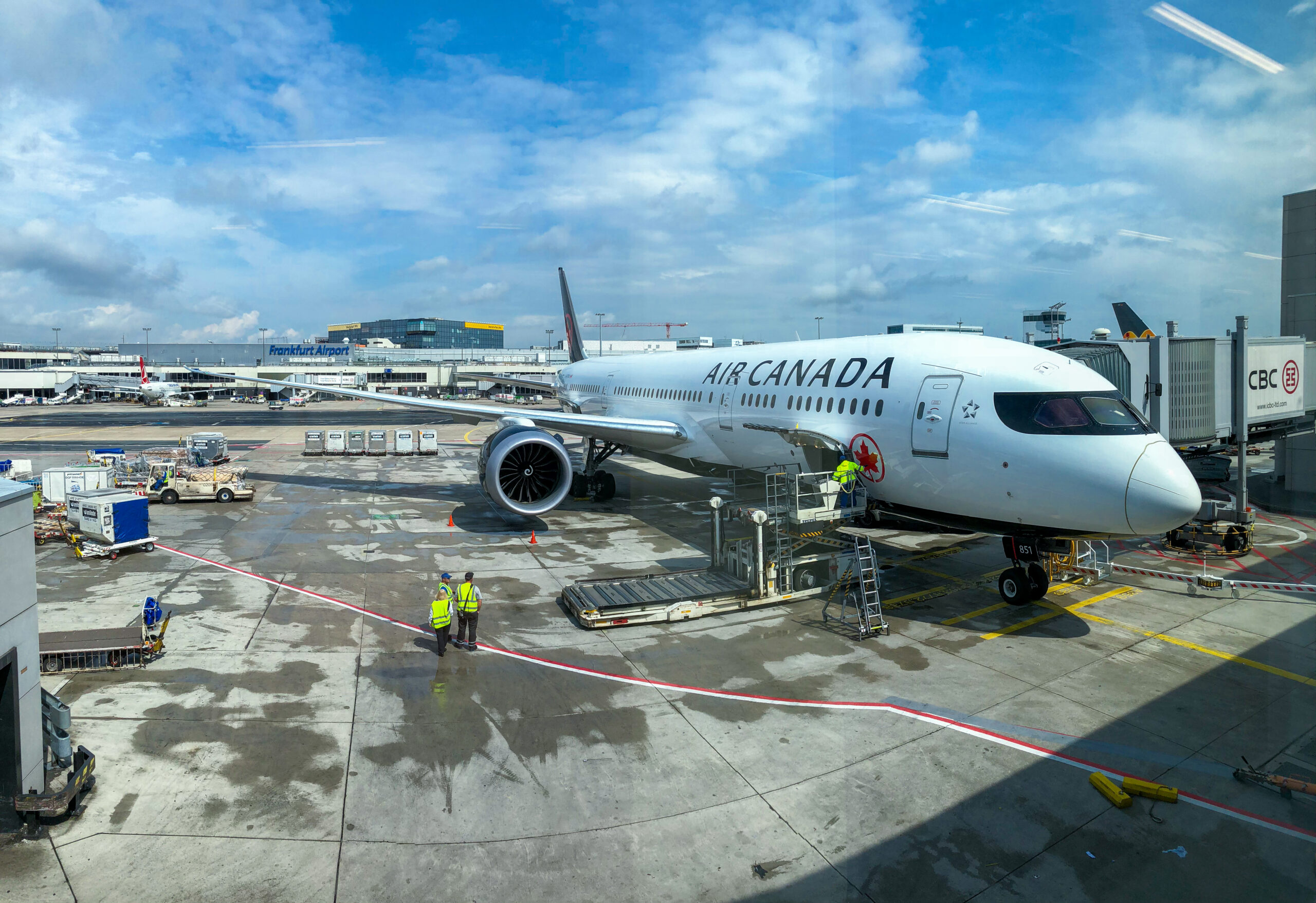
Our starting point was Calgary. Since there are no direct flights from Luxembourg to Canada, we had to get a bit creative with our travel plans. I booked everything through Air Canada, which took us from Luxembourg to Calgary via Frankfurt. Of course, there are plenty of other airlines and route options available, so it’s fairly easy to find a connection that works for you.
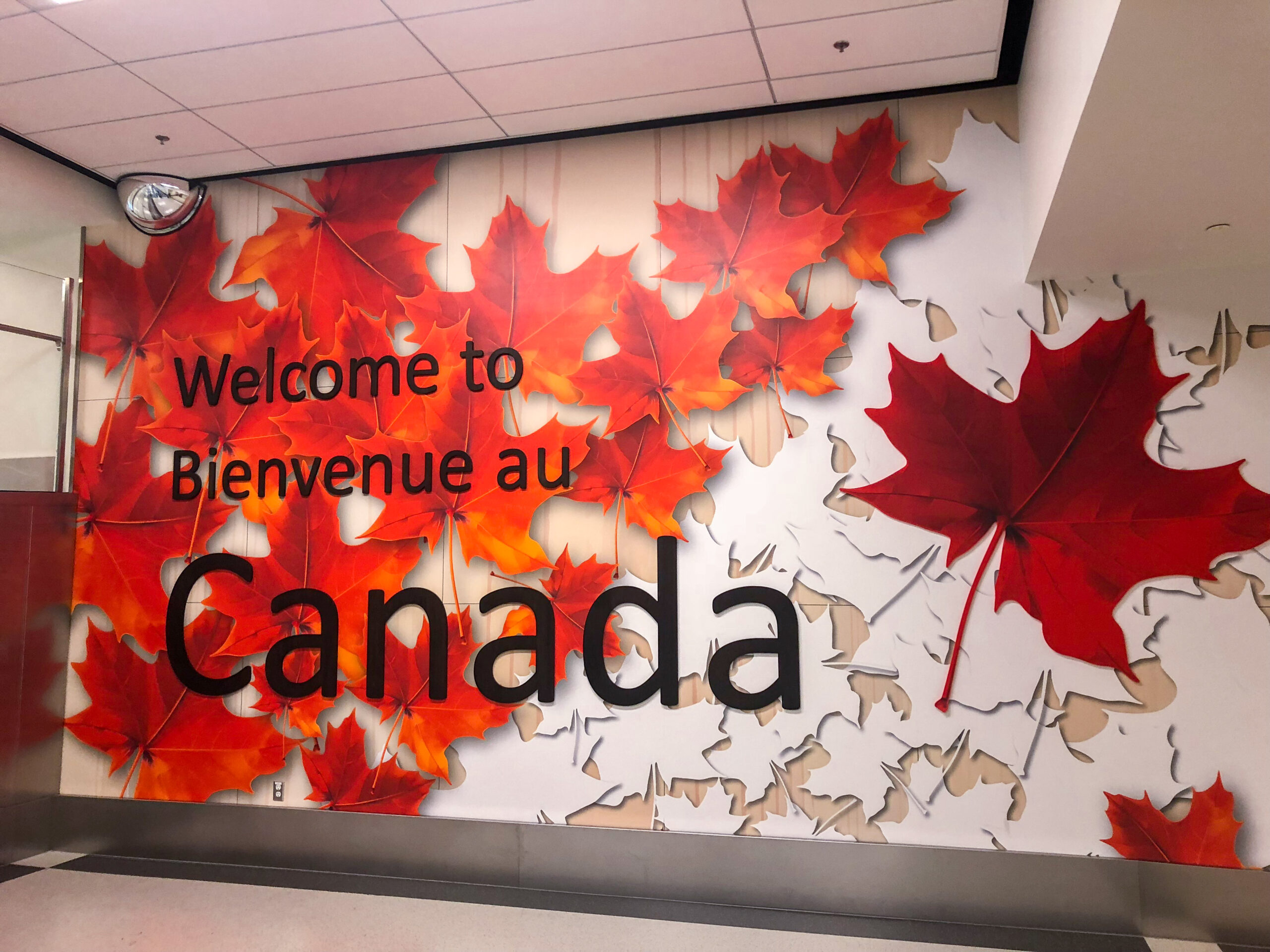
Renting car?
Definitely yes! If you have the chance to rent a car, go for it. Having your own vehicle gives you so much more freedom to explore the national parks at your own pace. Many of the must-see spots are spread out, and reaching them on foot or relying on public transport isn’t always practical or reliable, for that matter. A rental car also gives you the flexibility to plan your days around peak times, which is especially helpful for avoiding the crowds at popular spots like Lake Moraine.
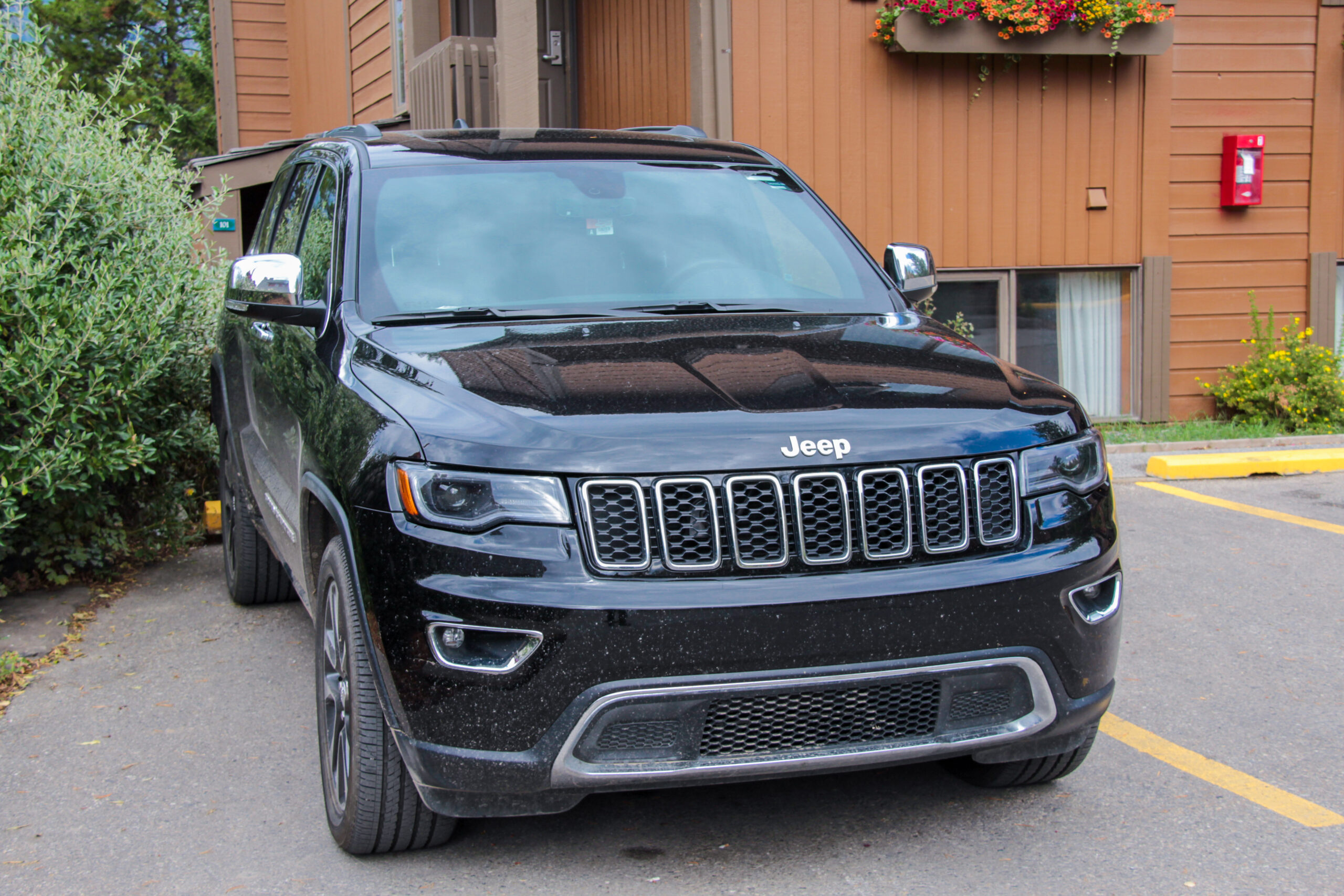
You can rent your car directly at Calgary Airport, where all the major rental companies are located. To make sure you get the type of car you want, especially if you’re looking for something specific like an SUV, it’s best to book your rental in advance. This not only secures your vehicle but also helps you avoid last-minute surprises.
Driving conditions?
Driving in Canada is generally easy and straightforward. As long as you respect the speed limits, you’ll be just fine.
One thing to keep in mind, especially when driving through Banff and Jasper National Parks, is that you might encounter wildlife on or near the road. It’s not uncommon to see elk, deer, or even bears along the way. As tempting as it might be, never leave your car to get closer, it can be extremely dangerous. No photo is worth risking your safety or even the animals.
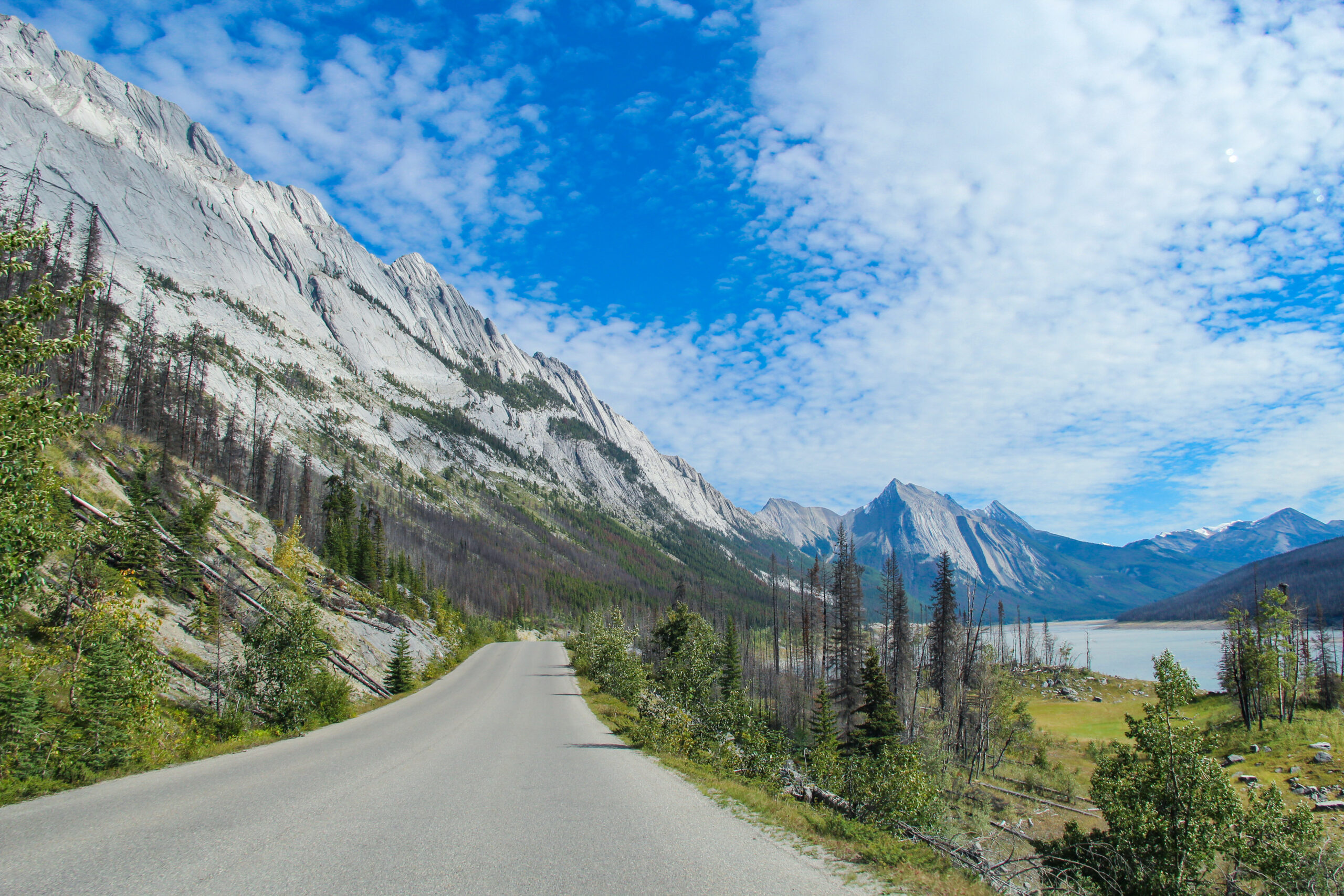
Currency & Costs?
The currency in Canada is the Canadian dollar (CAD). Be sure to bring your credit card or check that it’s authorized for international purchases. In places like Banff, some restaurants will only accept credit cards, so it’s good to have one handy.
As for costs, Canada isn’t exactly a budget destination. However, expenses can vary greatly depending on your preferences. Camping is definitely a more affordable option compared to staying in pricey hotels, so how you choose to spend your time will impact your budget.
Below, I’ve outlined a suggested 14-day road trip itinerary for Canada. Of course, feel free to adjust the route to suit your interests, whether you want to extend or shorten your journey.
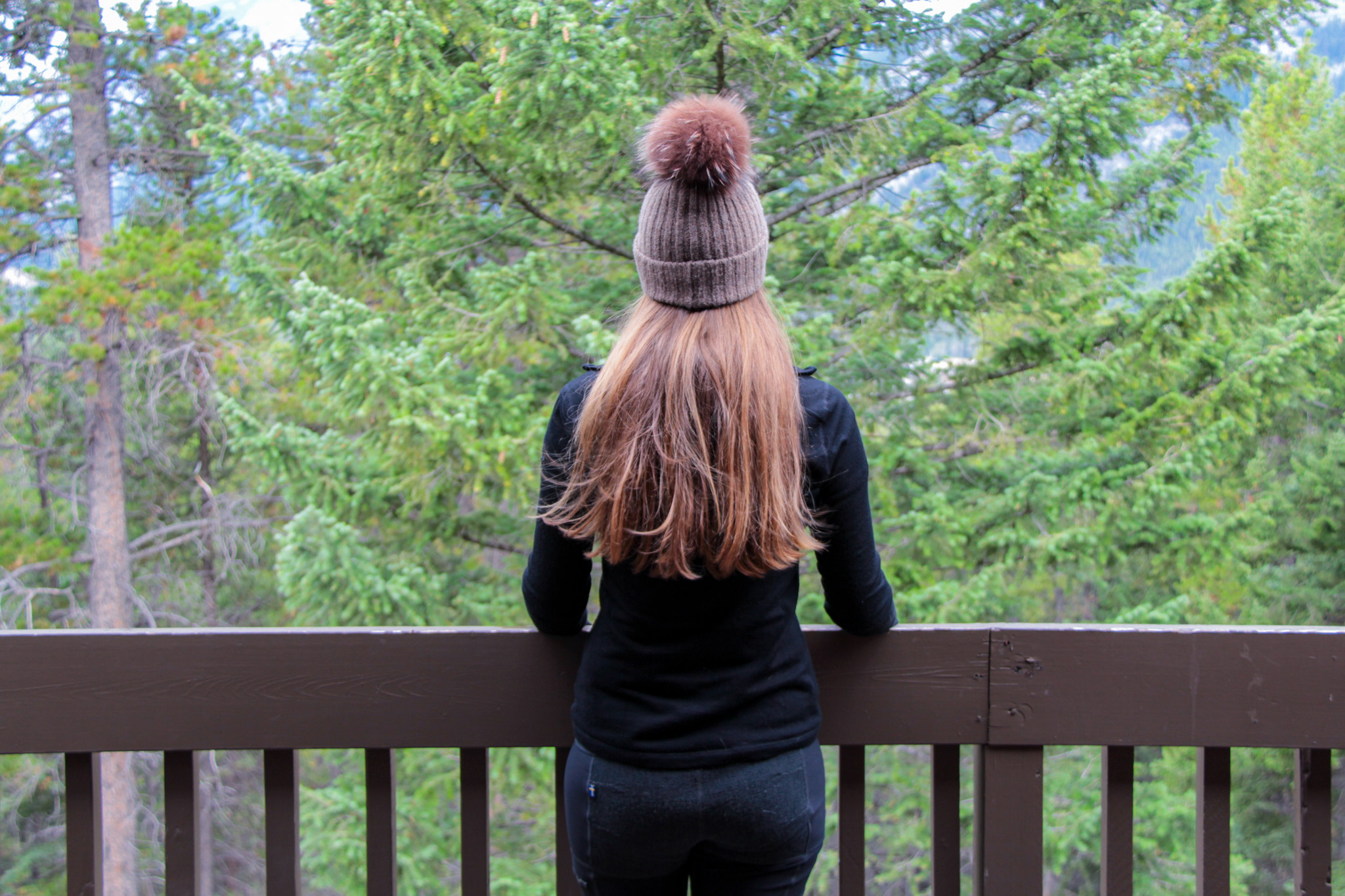

Calgary – Banff National Park – Jasper National Park

Where to start and end your West Canada Road Trip?
Calgary was the starting point of our road trip through Western Canada, with Banff National Park and Jasper National Park as our main destinations. We spent two weeks exploring, which, honestly, didn’t feel like nearly enough time to fully experience all the beauty Canada has to offer. Our journey also ended in Calgary, but depending on your preferences and how much time you have, you can easily choose a different starting or ending point..
Calgary – 2 nights
Calgary is the largest city in Alberta and is located just a short drive from the Canadian Rocky Mountains. Even if you’re using it as a starting point for your adventures in Banff and Jasper National Parks, it’s worth setting aside at least one day in your itinerary to explore the city. Calgary has a lot to offer, from its vibrant downtown to the stunning views of the surrounding mountains.
Read next: 5 thing to do in Calgary.
Calgary Tower
The Calgary Tower is a 190,8 meter freestanding tower located in Downtown Calgary. It opened in 1968 as the tallest building in the city and was initially called the Husky Tower. However, the name was quickly changed to Calgary Tower as a tribute to the citizens of Calgary.
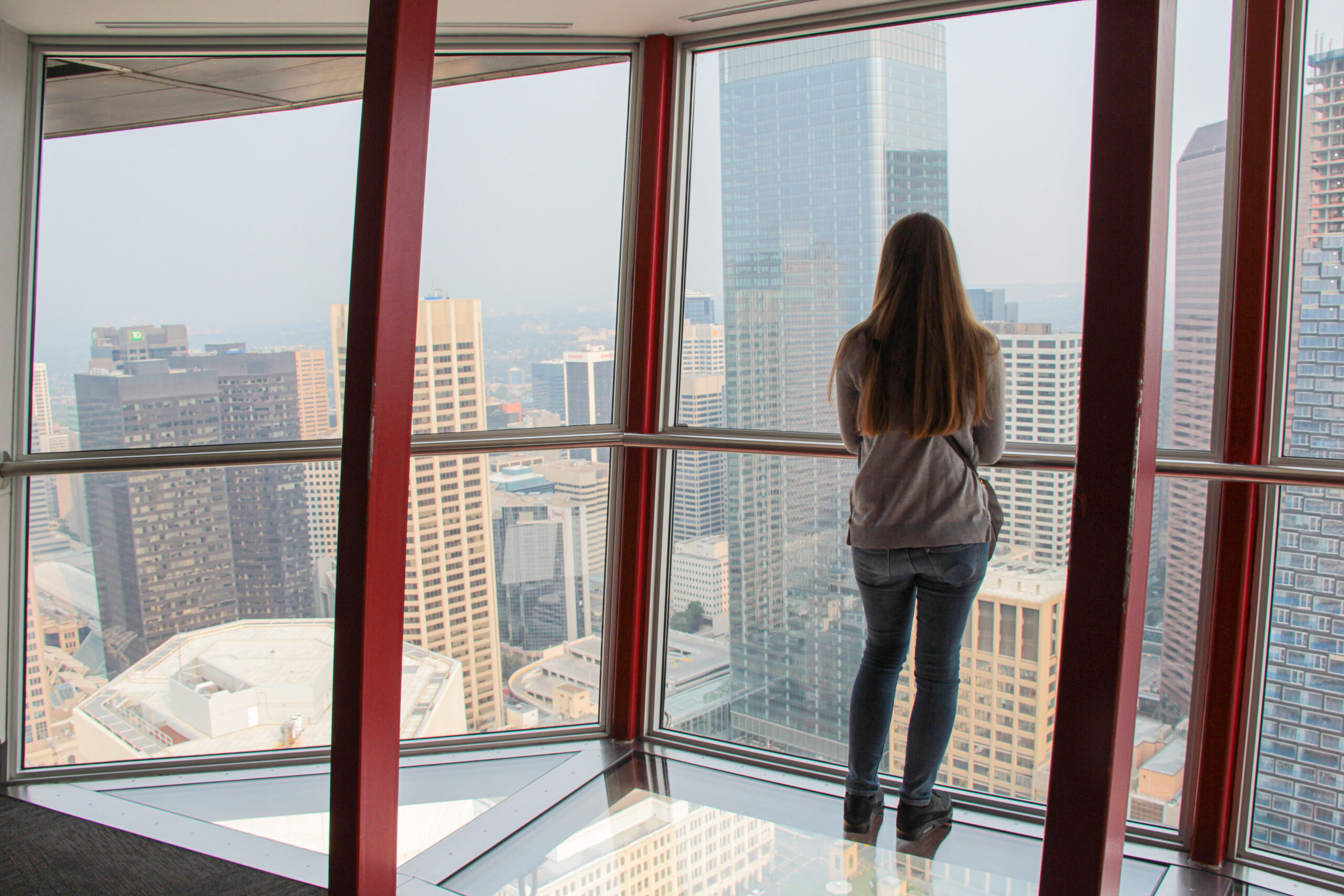
The highlight of the Calgary Tower is definitely the glass floor extension on the observation deck. It’s a popular spot, so most visitors end up standing on the glass floor. If you want to get a photo without a crowd, it’s a good idea to visit early in the morning. On clear days, you can even see the foothills of the Rocky Mountains from the tower, an incredible view to kick off your Canadian adventure!
Fort Calgary
Fort Calgary is an interactive museum that I highly recommend visiting. The fort was originally established in 1875 as Fort Brisebois by the Royal Northwest Mounted Police. It was built primarily to control the illegal American whisky trade, prepare for the arrival of the Canadian Pacific Railway, and foster better relations with the Indigenous peoples, to whom the land rightfully belongs.
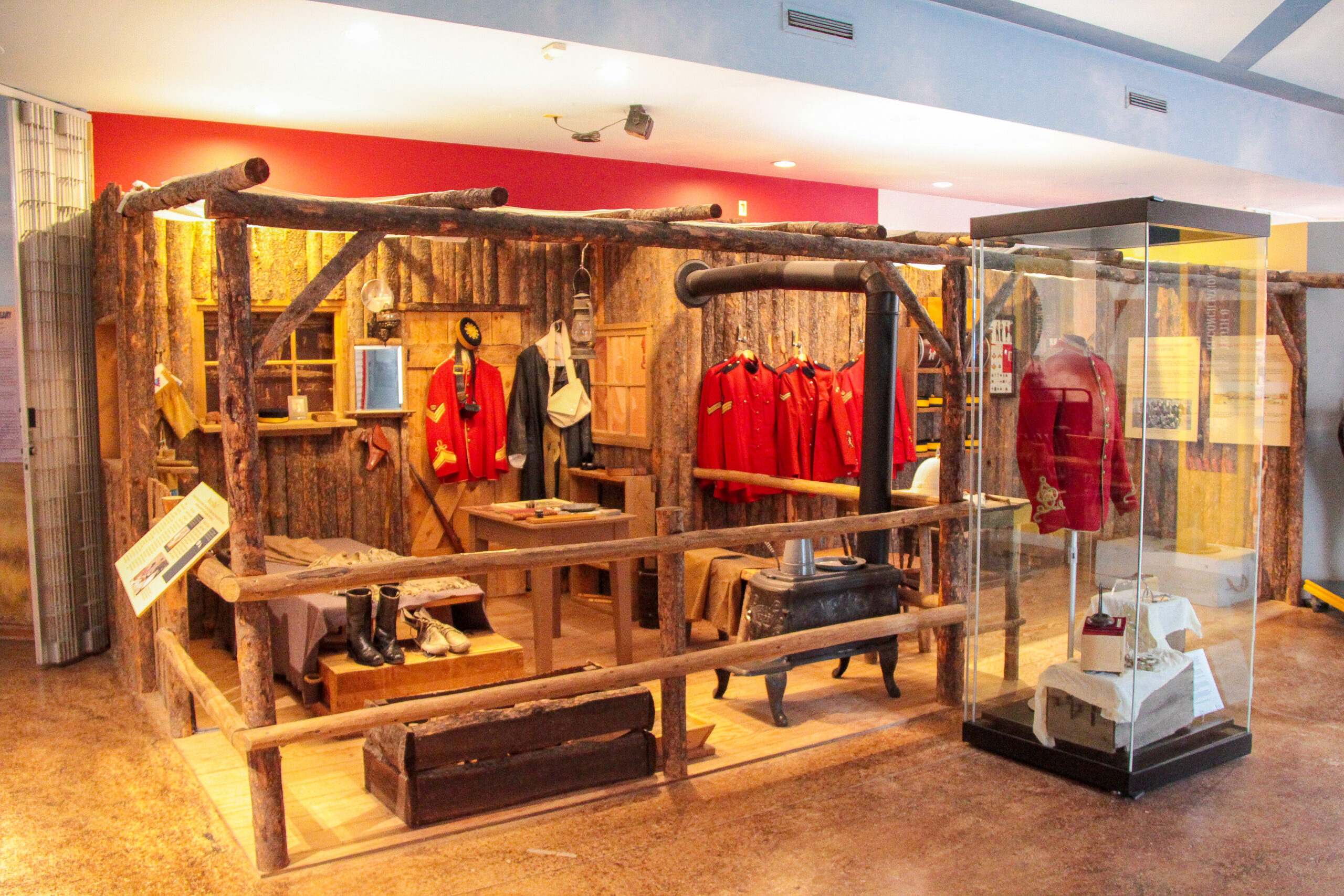
Since the fort is located on the traditional territory of Indigenous peoples, their culture and history are central to the exhibits at this historic site. You can take a walk through time and explore the significant role Fort Calgary played, not only in the development of the region but also in the relationship between settlers and the Indigenous communities.
Big Rock Brewery
The Big Rock Brewery is a Canadian craft beer company, headquartered in Calgary, and is the largest brewery in the city. In addition to its Calgary location, they also have brewing facilities in Vancouver, Etobicoke, and Toronto. Founded in 1985, Big Rock Brewery has built a strong reputation over the years, attracting talented brewmasters along the way.
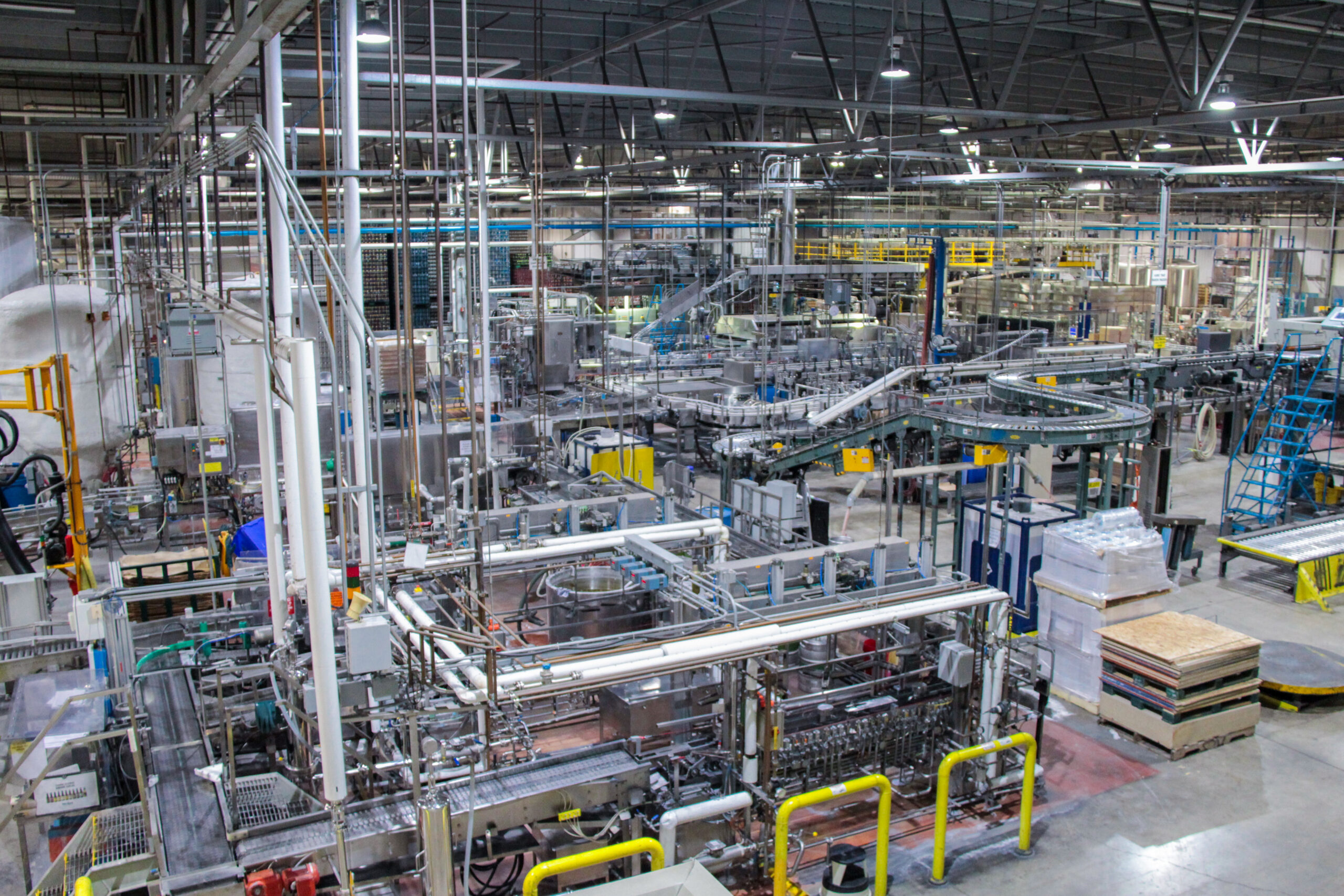
If you’re interested in beer, you have to do a tour of the brewery. It is interesting how the whole process of making beer works. Of course, after the tour, you’ll get some beer and ciders to try.
Hotel
Le Germain Calgary
The Hotel Le Germain Calgary is located in the heart of the city, right at the foot of the Calgary Tower. It’s the perfect starting point for your adventures, with the Canadian Rockies just an hour’s drive away.
Driving time: Calgary to Banff: 1 hour 30 minutes
Banff – 4 nights
Mount Norquay
Via Ferrata is an Italian term meaning „iron road.“ It refers to a protected climbing route where a steel cable, fixed into the rock, runs along the entire path. This allows climbers to reach more challenging peaks that were typically only accessible to experienced mountaineers. Along the way, you’ll encounter ladders and suspension bridges, adding an extra thrill to the climb.

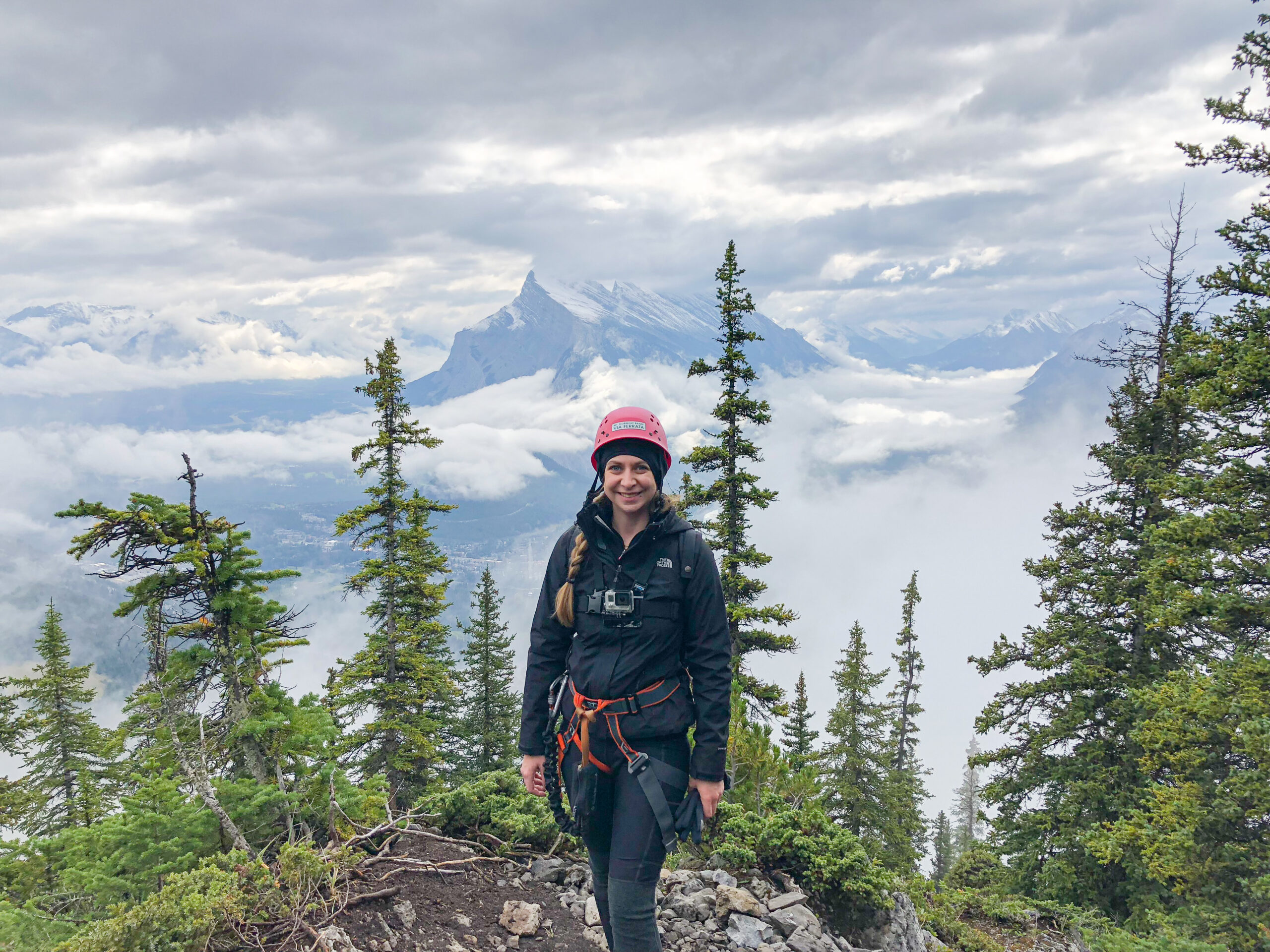
Since 2014, the Via Ferreta is possible on Mount Norquay and it’s the only one of its kind in Banff National Park. There are four different routes to choose from, each offering a unique level of difficulty and adventure. The available options are:
- Explorer: 2 – 2.5 hour round trip | 1km distance | 2235m above sea level | 145m elevation gain | $175
- Ridgewalker: 3.5 – 4 hour round trip | 1.4km distance | 2300m above sea level | 260m elevation gain | $225
- Skyline: 4.5 – 5 hour round trip | 2.5km distance | 2380m above sea level | 290m elevation gain | $290
- Summiteer: 5 – 6 hour round trip | 3.2km distance | 2450m above sea level |360m elevation gain | $365
For anyone wanting to try it but feeling unsure about which route to choose, I highly recommend the Ridgewalker route. It’s not too difficult, making it ideal for beginners, but it still gives you the full thrill of climbing up a mountain. As you make your way along the route, you’ll be rewarded with incredible panoramic views of the surrounding peaks and valleys—it’s the kind of experience that makes your heart race in the best way.
Read next: Via Ferreta on Mount Norquay.

Sulphur Mountain
The Banff Gondola is an absolute must-do during your stay in Banff National Park. It takes you up to the summit of Sulphur Mountain, which stands at 2,292 meters. This spot has become iconic thanks to its breathtaking panoramic view over the Town of Banff. From the top, not only can you gaze down at the charming town below, but you’ll also be treated to a stunning vista of six surrounding mountain peaks—a view that’s truly unforgettable.
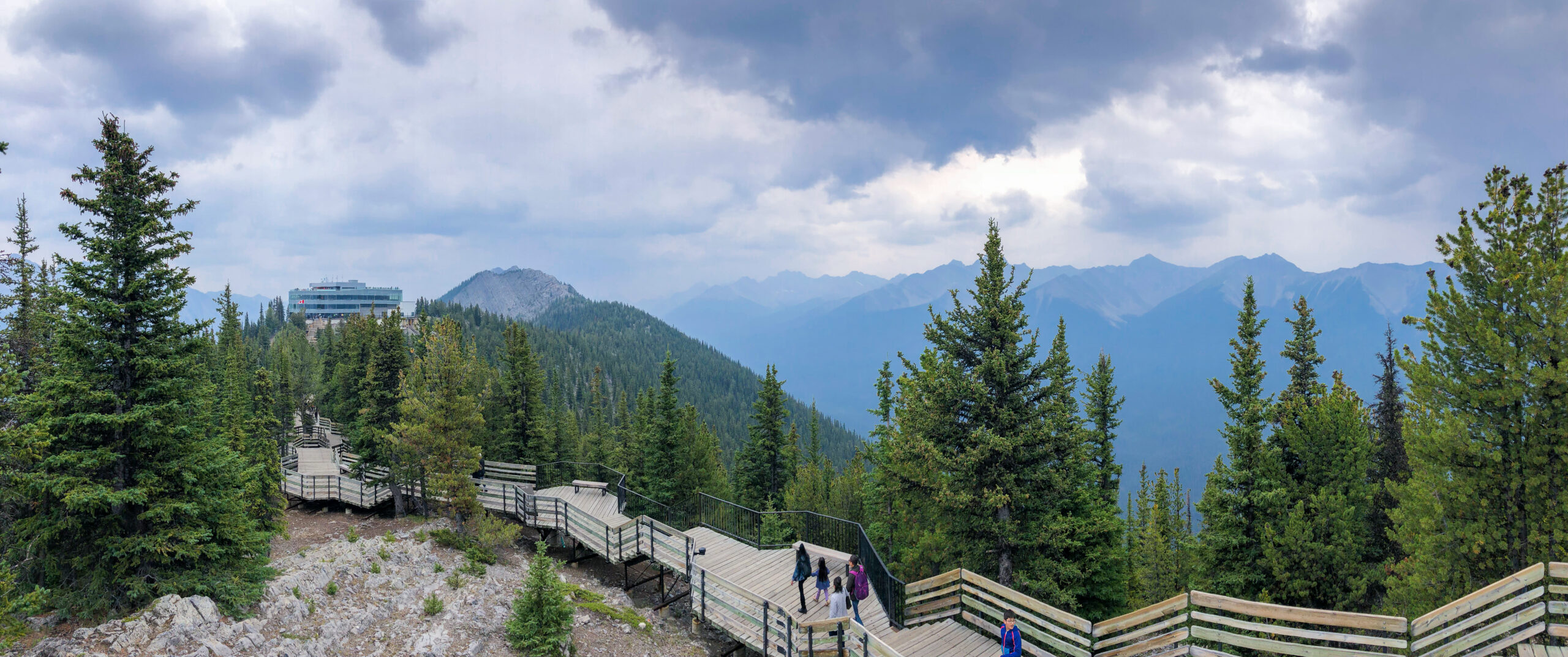
Sulphur Mountain is also home to two natural hot sulphur springs. The lower one is the Cave and Basin National Historic Site, and the higher one is the Banff Upper Hot Springs. The latter is especially popular among visitor, so be prepared for crowds! Since both the Banff Gondola and the Upper Hot Springs are located close to each other, it’s easy to combine them into one outing.
The Cave and Basin spring was discovered in 1883 by three railway workers and marks the birthplace of Canada’s national parks system. While you can still visit the site today and learn about its fascinating history, bathing in the springs is no longer allowed.
Read next: Banff Gondola and Sulphur Mountain.
Banff Upper Hot Springs
In 1883, Canadian Pacific Railway workers stumbled upon hot water and steam rising from a cave at the foot of Sulphur Mountain, what we now know as the Cave and Basin Hot Springs. This discovery played a key role in the creation of Canada’s national park system. Later, in 1932, the Upper Hot Springs bathhouse was opened, offering visitors access to the soothing sulphur-rich waters along with modern facilities.
Long before the arrival of European settlers, Indigenous peoples had already recognized the significance of these thermal waters. The hot springs were considered sacred, believed to possess healing powers that could cure illness and promote well-being—a tradition that adds deep cultural meaning to these natural wonders.
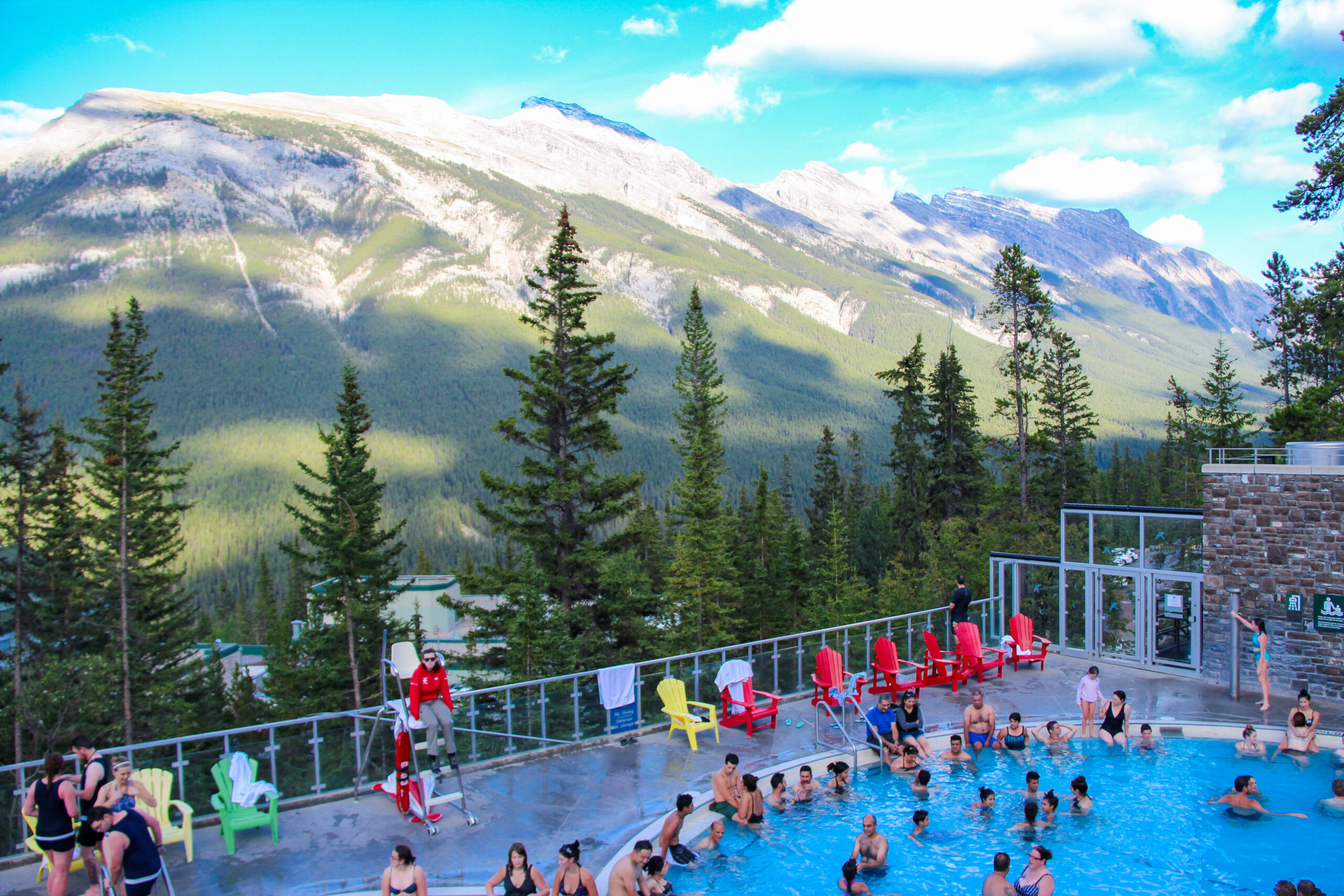
The Banff Upper Hot Springs are the only remaining hot springs in the area still open to the public for bathing. Naturally, this makes them quite popular, which often means crowded pools and little tranquility. Personally, I find it hard to truly enjoy a relaxing soak when you’re surrounded by so many people. The magic of the experience fades a little when it’s more of a social gathering than a peaceful escape.
Bow Falls and Bow River
The Bow River is a scenic river flowing through Alberta, including right through the city of Calgary. It’s a great spot if you’re into fishing or simply want to enjoy nature at a slower pace.
Not far from the river, you’ll find Bow Falls, a relatively small but impressive waterfall near the historic Banff Springs Hotel. Since it’s easily accessible on foot, Bow Falls is a popular stop for many visitors exploring the area.


Cave and Basin National Historic Site
The Cave and Basin Hot Springs were the first hot springs discovered in what is now Banff National Park, making them the birthplace of Canada’s first national park. It all began with hot water emerging from a crack in the mountain rocks. While Indigenous peoples had long known about and respected the healing properties of these springs, it was Canadian Pacific Railway workers who saw an opportunity to profit from them. However, their claim was denied, and instead, the Government of Canada stepped in, ultimately using the discovery as a foundation to establish a national park system.
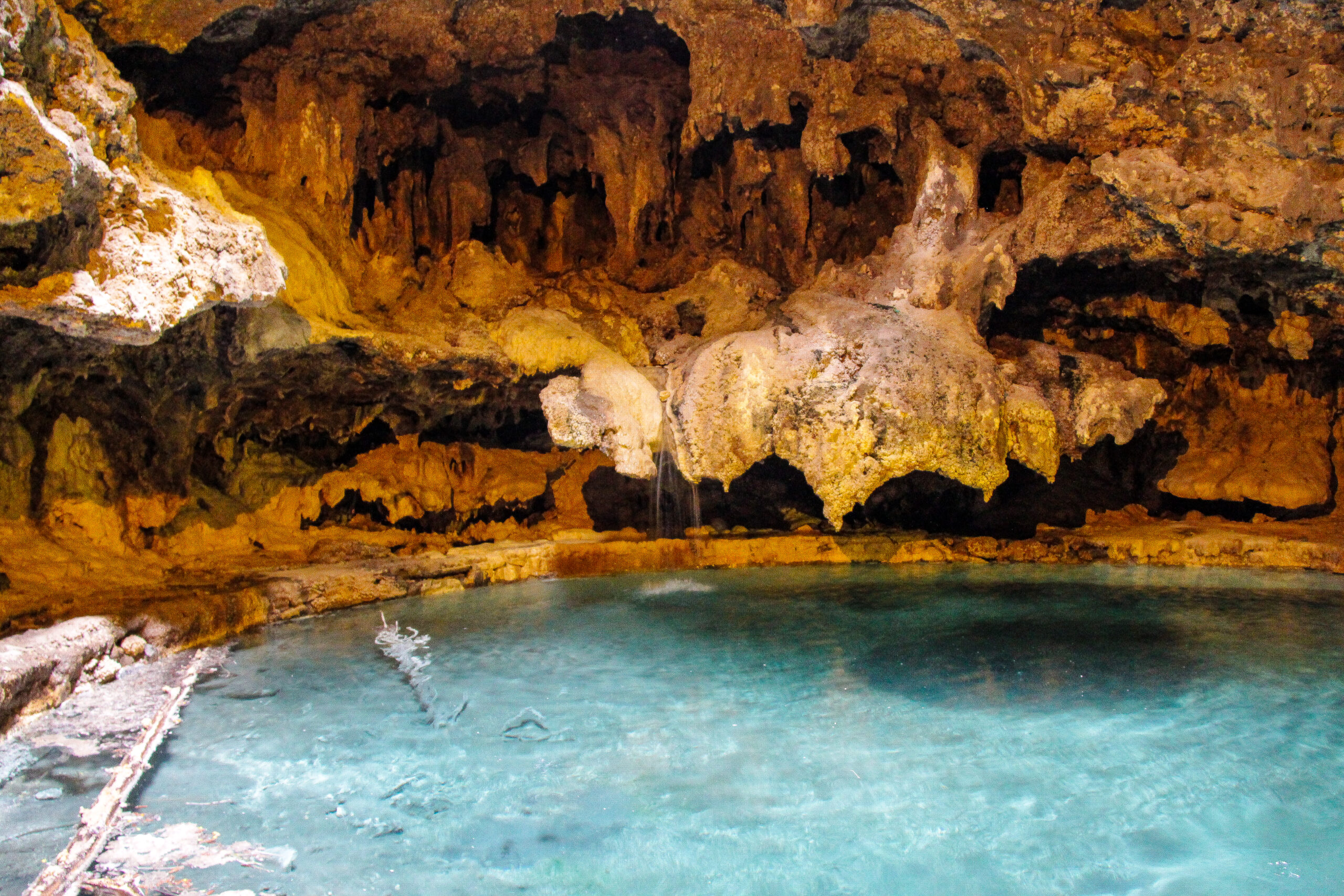
This historical birthplace of Banff National Park is the perfect location for a museum. The Cave and Basin National Historic Site is a small but very informative museum located in the heart of the park. Interactive exhibits and film presentations take you through the discovery of the hot springs and the creation of Canada’s first national park. But the highlight of the visit is, without a doubt, the hot springs themselves, where it all began.
Whyte Museum of the Canadian Rockies
The Whyte Museum of the Canadian Rockies is the fourth-largest cultural and historical museum in Alberta. Founded in 1968, the museum is dedicated to collecting, preserving, and showcasing the cultural heritage of the Canadian Rockies. It also houses a library and archives. The museum was founded by Peter and Catharine Whyte, whose vision brought this rich collection to life. During the summer months, visitors can explore two homes and four cabins that offer a glimpse into the lives of Banff’s early pioneers.

Hotel
Hidden Ridge Resort
I highly recommend the Hidden Ridge Resort for your stay in Banff. While it’s not located directly on the main street, it’s just a short distance away from the downtown area, offering a more peaceful setting. It’s not your typical hotel but rather a vacation rental, complete with a fully equipped kitchen and even a wood-burning fireplace. Unfortunately, due to the bushfire risk, we weren’t allowed to use the fireplace during our stay.
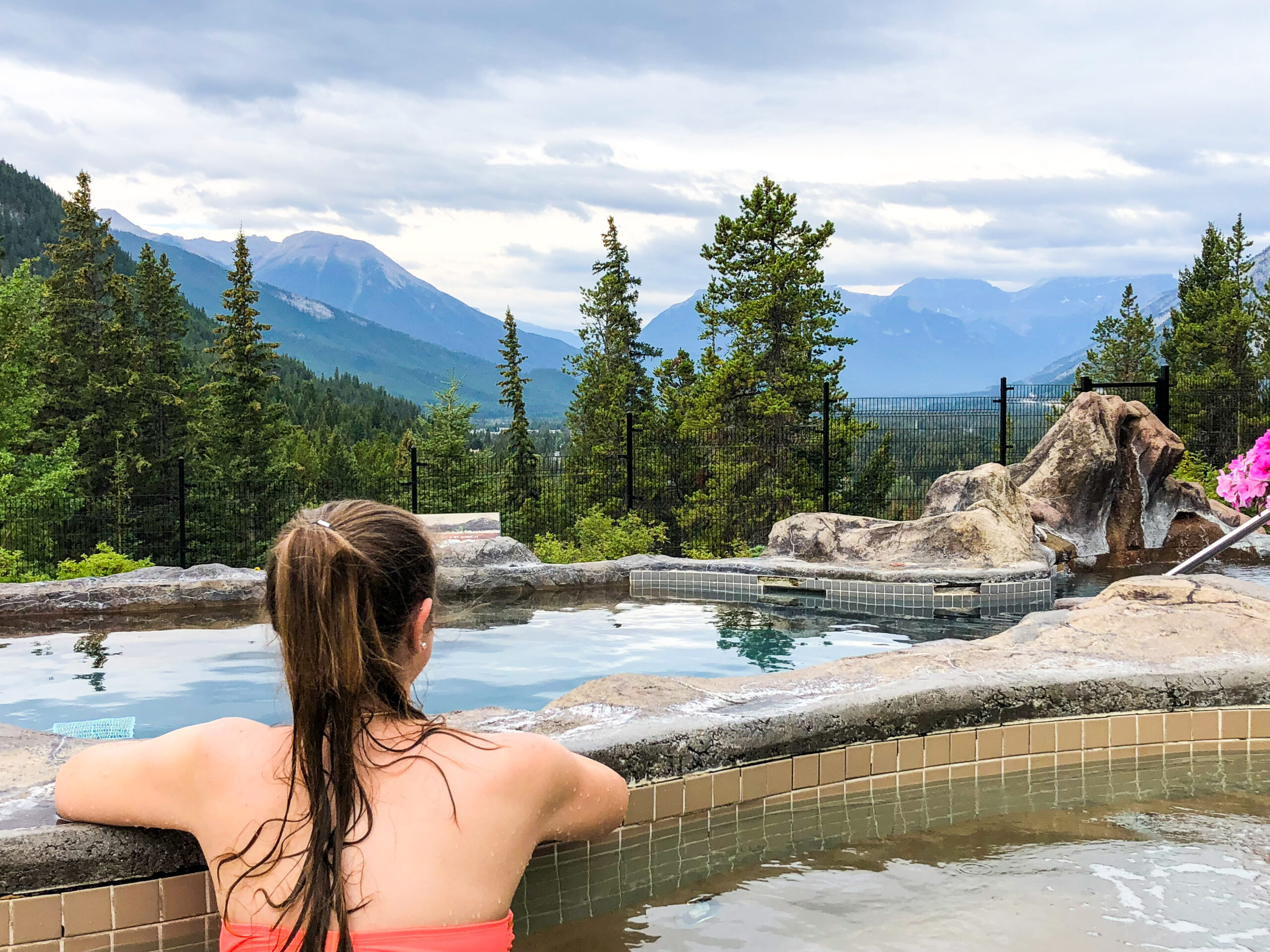
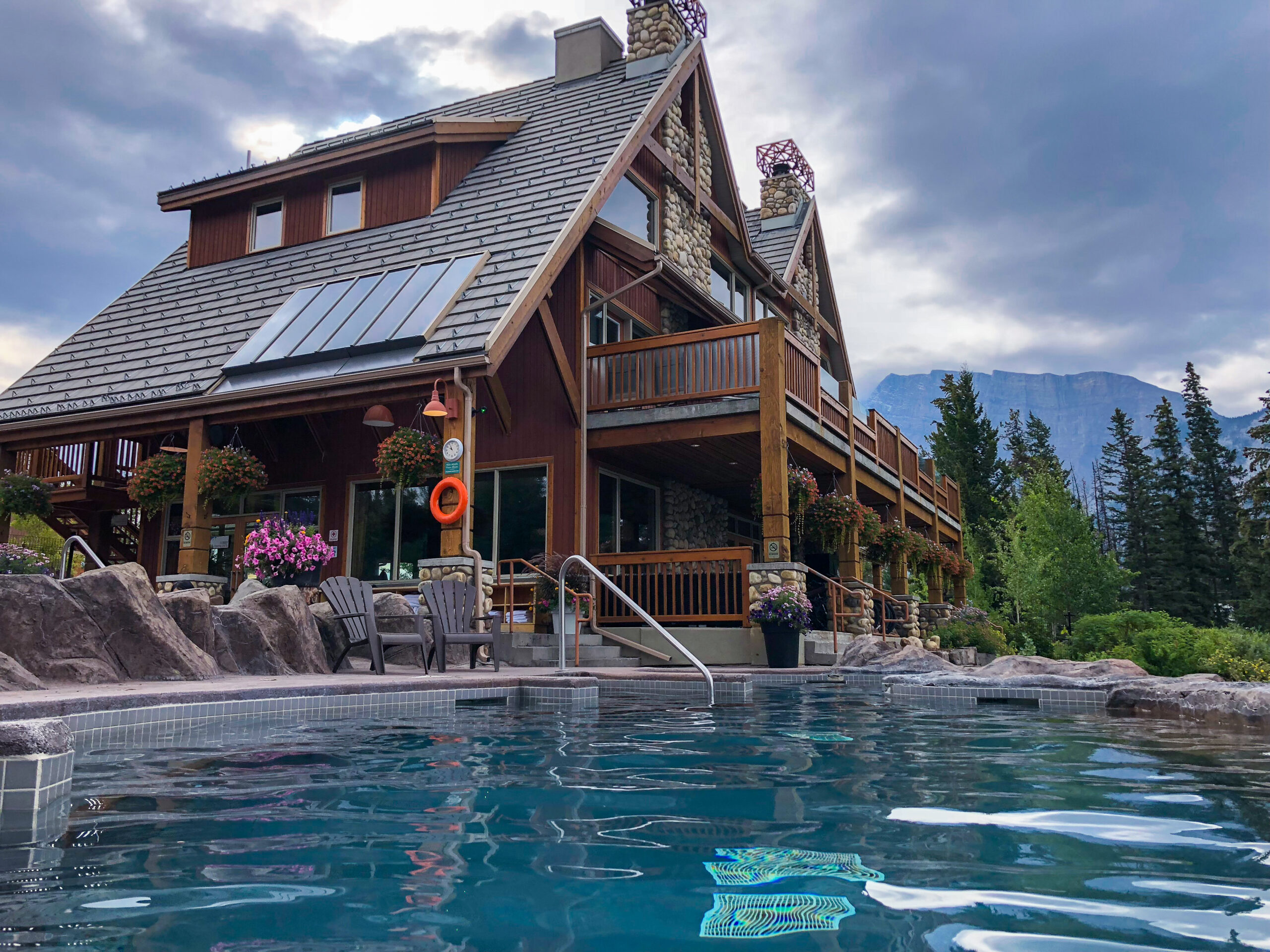
The Hidden Ridge Resort also offers an upper outdoor hot tub, a lower outdoor wading pool, and even a sauna. There’s truly nothing better than relaxing in the hot tub after a long day of hiking, or even first thing in the morning right after waking up.
Bow Valley Parkway
Johnston Canyon
Johnston Canyon offers a relatively easy hike in Banff National Park. The trail takes you to both the Lower and Upper Falls, with several viewpoints along the way that provide stunning views of the canyon and the deep blue creek below. With its overhanging canyon walls, cascading waterfalls, and the deep pools of Johnston Creek, this natural attraction is truly one of the most breathtaking spots in Banff National Park.
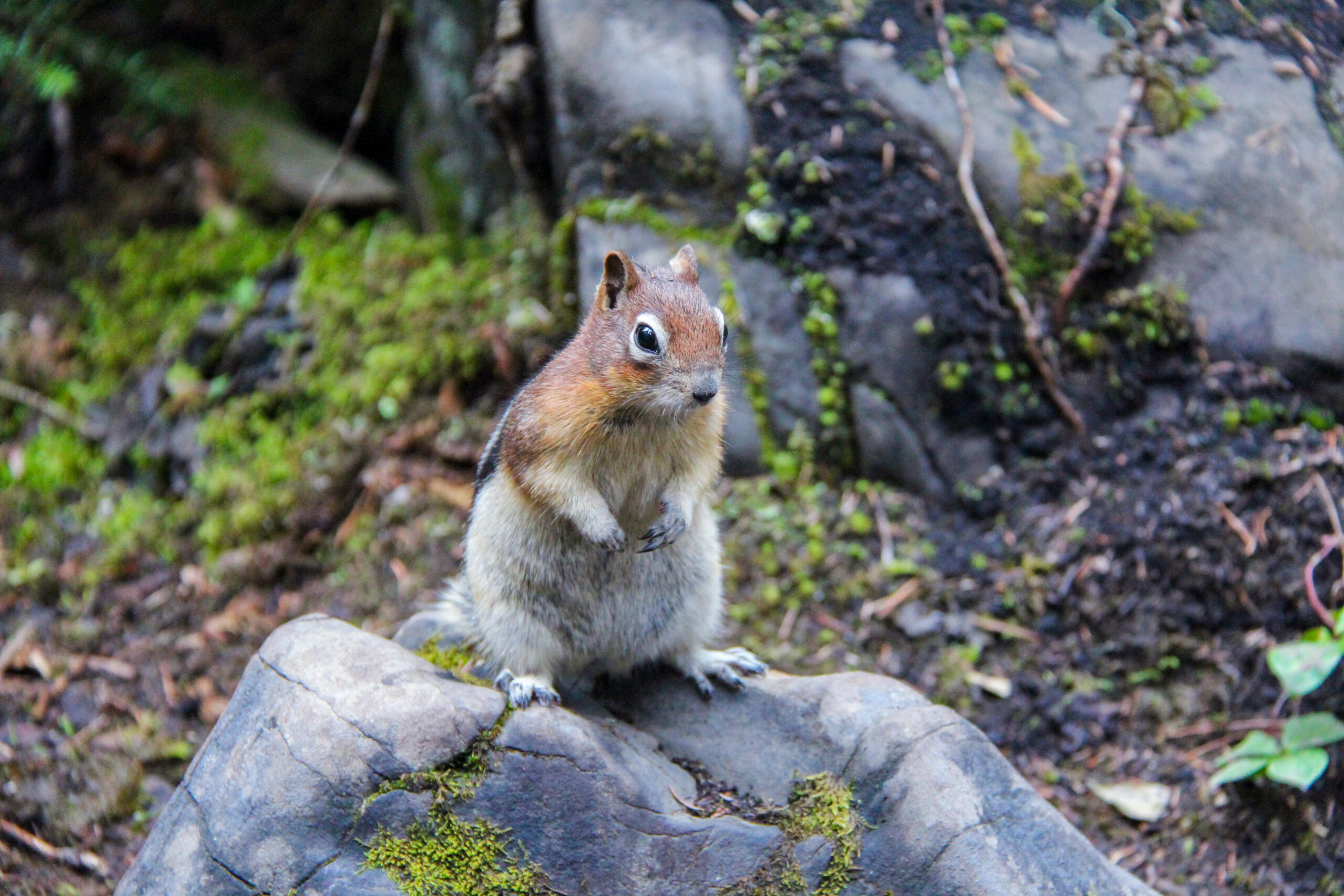
The trail to the Lower Falls begins through the forest and then continues on catwalks that run right beside Johnston Creek. This section is about 1.1 km long, relatively flat, and easy to walk. It typically takes around 30 minutes to reach the Lower Falls. However, in the summer, the trail can get quite crowded, so be prepared to exercise a little patience before you can fully enjoy the view of the falls.

The trail to the Upper Falls is a bit more challenging than the one to the Lower Falls. It is steeper and takes about an hour one way. The trail is approximately 2.6 km long and winds through the forest. The Upper Falls themselves are 40 meters high, plunging into a deep pool below, offering a more dramatic and impressive sight than the Lower Falls.
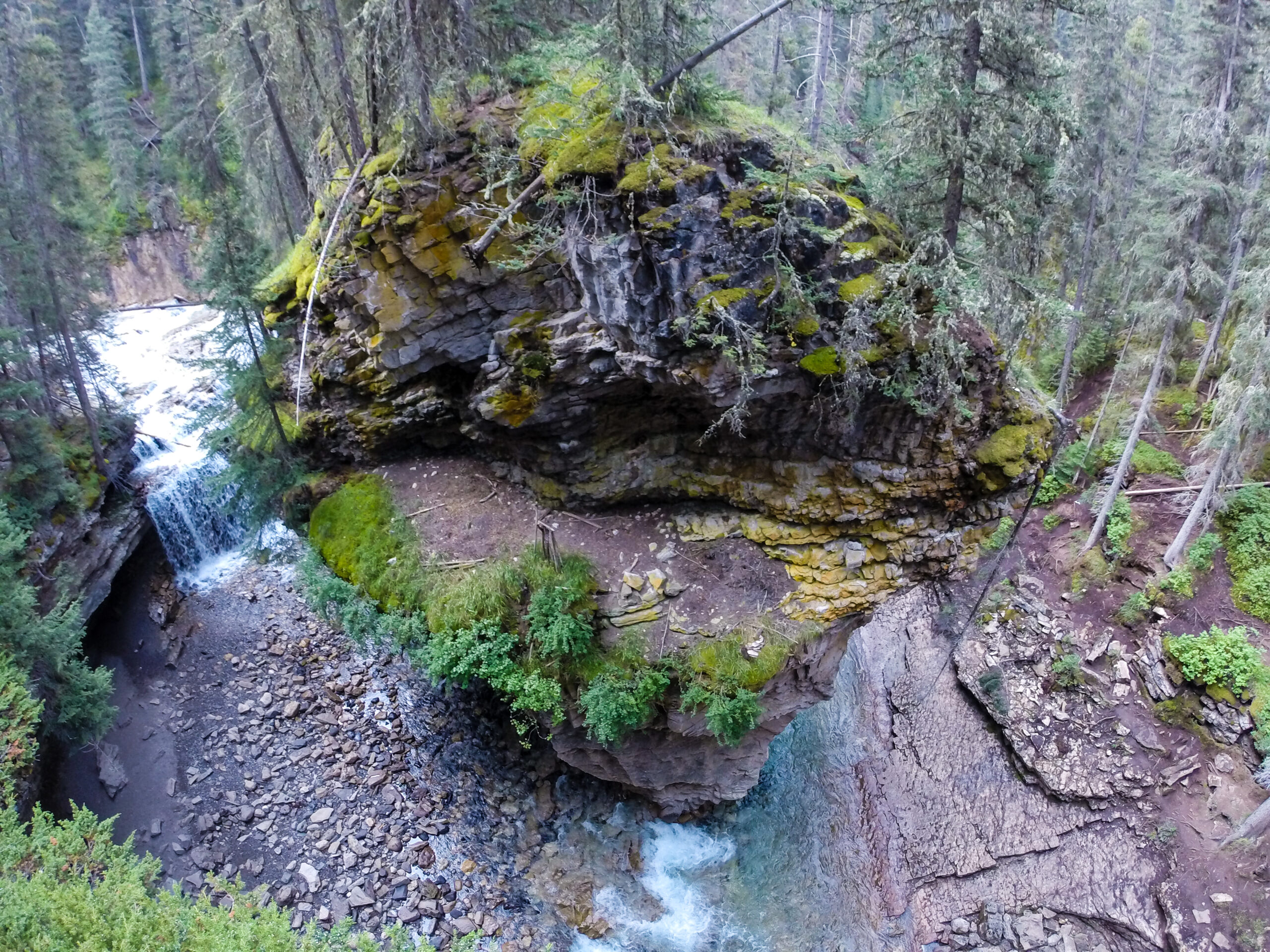
You may have seen photos of Johnston Canyon featuring a view from a cave on a rock with water in the background. However, don’t try to seek out this spot. Hiking to that location can disturb nesting birds, and the photo isn’t worth disrupting nature. It’s important to respect wildlife and their habitats, preserving the natural beauty of the area for everyone to enjoy.
Driving time: Banff to Lake Louise: 40 minutes
Lake Louise – 3 nights
Moraine Lake
Moraine Lake is one of the most iconic lakes in the world. Located in Banff National Park, in the stunning Valley of the Ten Peaks, it is a glacially-fed lake. The water doesn’t reach its peak level until mid to late June, as it’s replenished by glacial melt. The lake’s striking azure blue color comes from the refraction of light through the rock flour, which is finely ground sediment deposited by the glaciers.

The area around Moraine Lake also offers several walking and hiking trails. The most popular one is certainly the Rockpile Trail, which runs along the actual moraine and leads to the most photographed view in all of Canada. This short trail is about 300 meters long with an elevation gain of 24 meters. The view from the top of the Rockpile is famously known as the “Twenty Dollar View,” as it was featured on the reverse side of the Canadian twenty-dollar bills issued in 1969 and 1979.
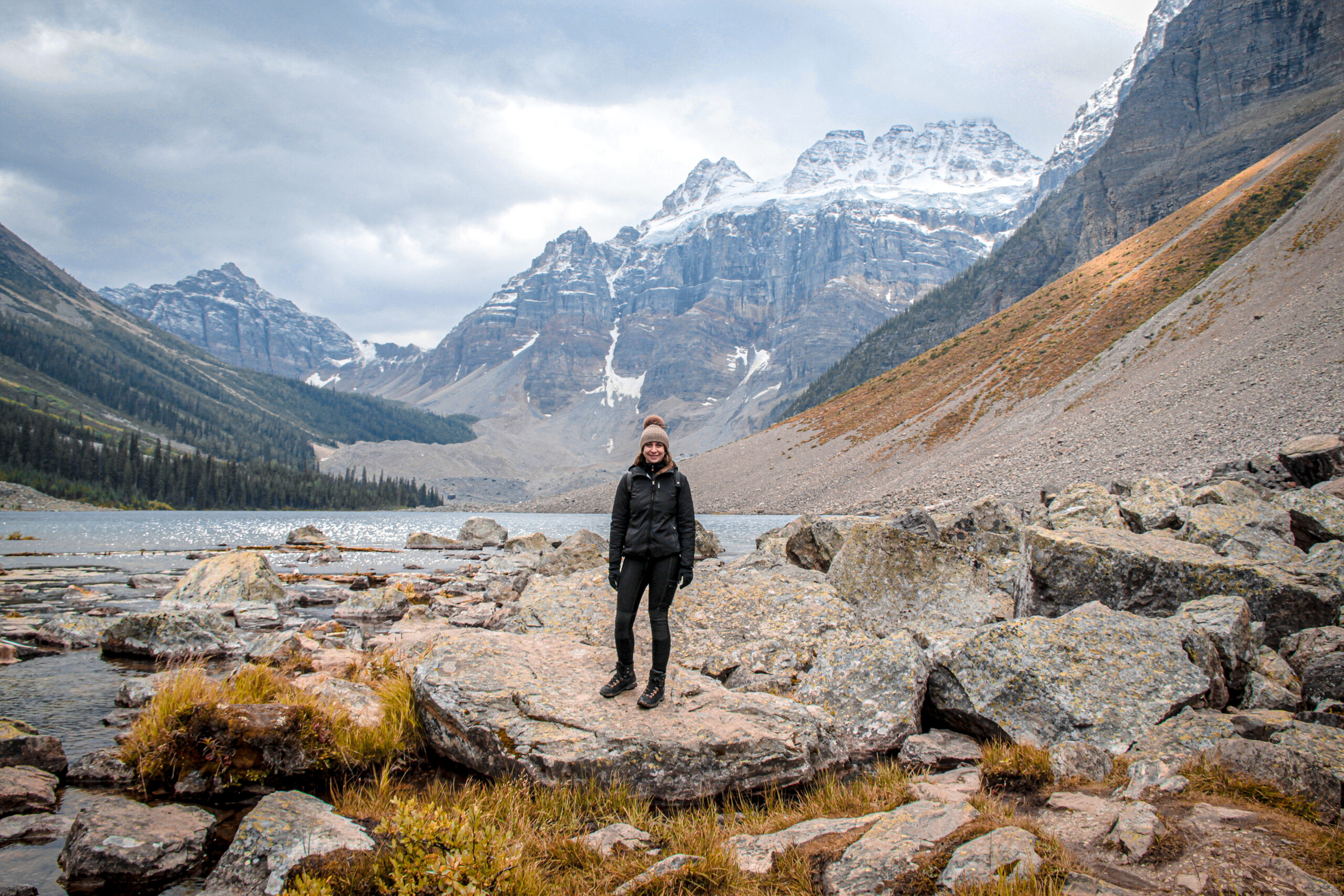
Another popular hike in the area is the Consolation Lakes Trail, which is about 5.8 km long and considered an easy hike, making it a great option for most visitors.
If you’re planning to visit Moraine Lake, make sure to arrive as early as possible—and by early, I mean really early. I arrived at 7 a.m., and the only parking lot was already full. Moraine Lake is one of the most visited attractions in Banff National Park, and it’s almost always crowded, especially during peak season.
Read next: Top 10 things to do in Banff National Park, Canada
Lake Louise
Besides Moraine Lake, Lake Louise is one of the most famous lakes in Banff National Park. It is a glacial lake, known for its stunning turquoise color, which comes from rock flour carried into the lake by meltwater from the surrounding glaciers.

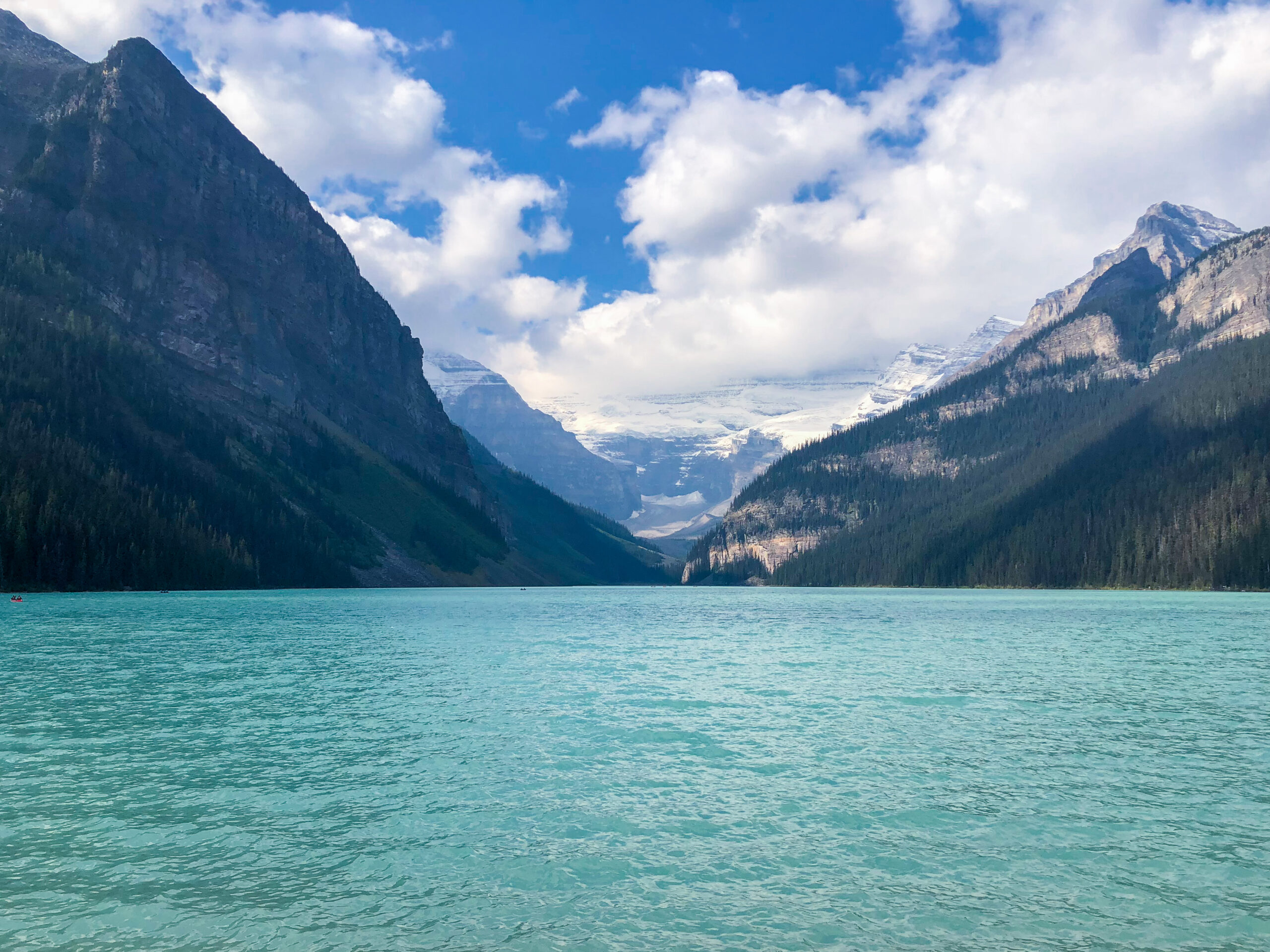
As one of the most famous places in the Canadian Rockies, Lake Louise is busy all year round. In summer, it’s a hub for hiking, and you can rent a canoe to paddle across the turquoise waters. In winter, the lake transforms into a large natural ice skating rink.
The most popular hike is the trail to Lake Agnes and its charming Tea House. The hike is about 7 km and takes roughly 2 hours one way. Since the Tea House is a well-known stop for hikers, it tends to get quite crowded, and finding a table inside can be a bit of a challenge.


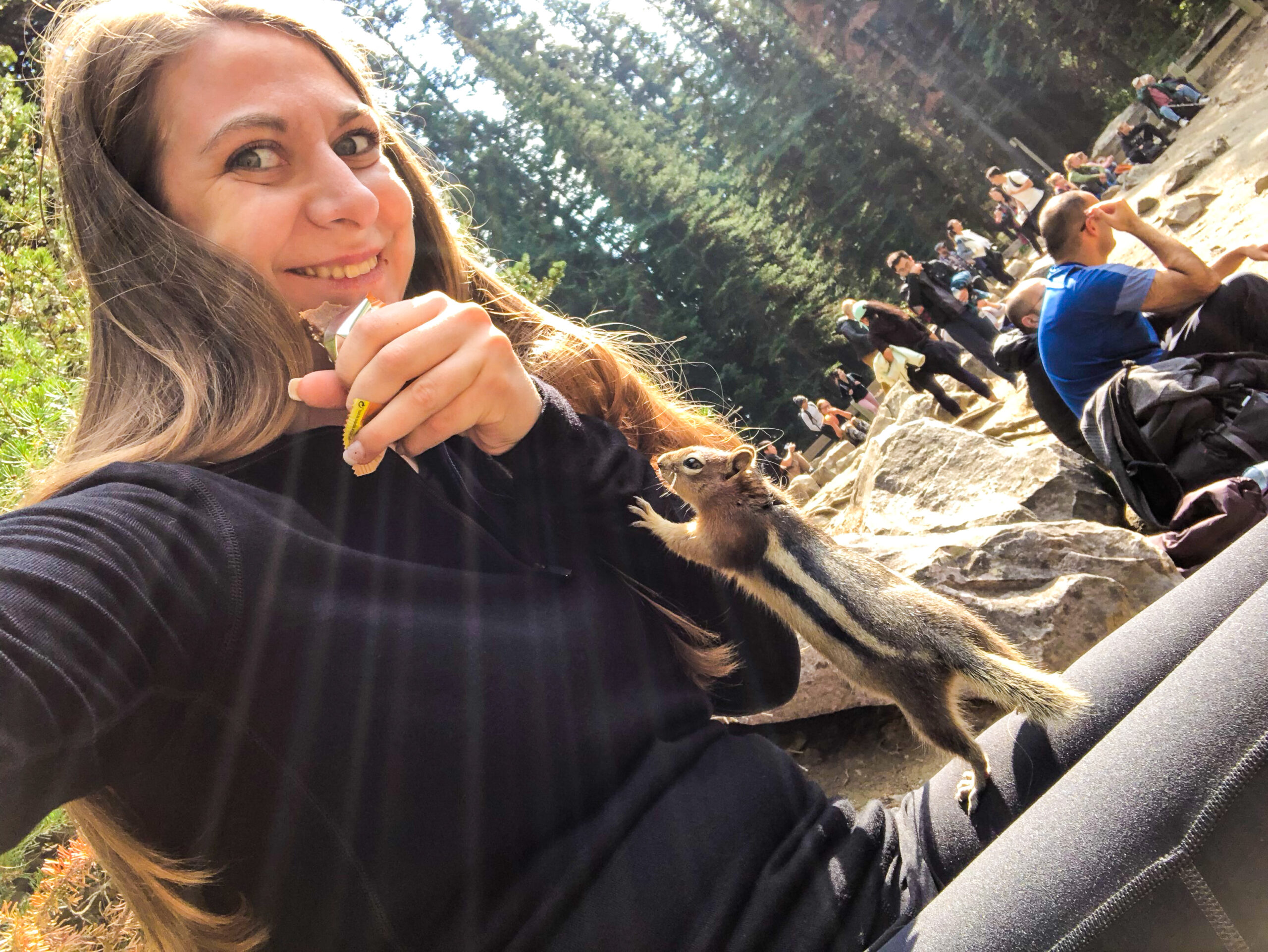
You can also extend your hike from Lake Agnes by continuing to either the Little Beehive or the Big Beehive. Both trails lead you further up the mountain and reward you with breathtaking panoramic views over Lake Louise. The Little Beehive is slightly easier and offers a beautiful lookout point, while the Big Beehive is more challenging but gives you a dramatic overhead view of the lake below.
Read next: Lake Louise in Banff National Park.
Hotel
Paradise Lodge and Bungalow
Paradise Lodge and Bungalows is the perfect place to stay during your visit to Banff National Park, Canada. Conveniently located just minutes from both Lake Louise and Moraine Lake, it offers the ideal base for exploring the area. You can even walk to Lake Louise, which is a huge plus, no need to worry about finding a parking spot! The charming cabins and suites are fully equipped with a kitchen and an electric fireplace, making it a comfortable and relaxing retreat after a long day of hiking or sightseeing.
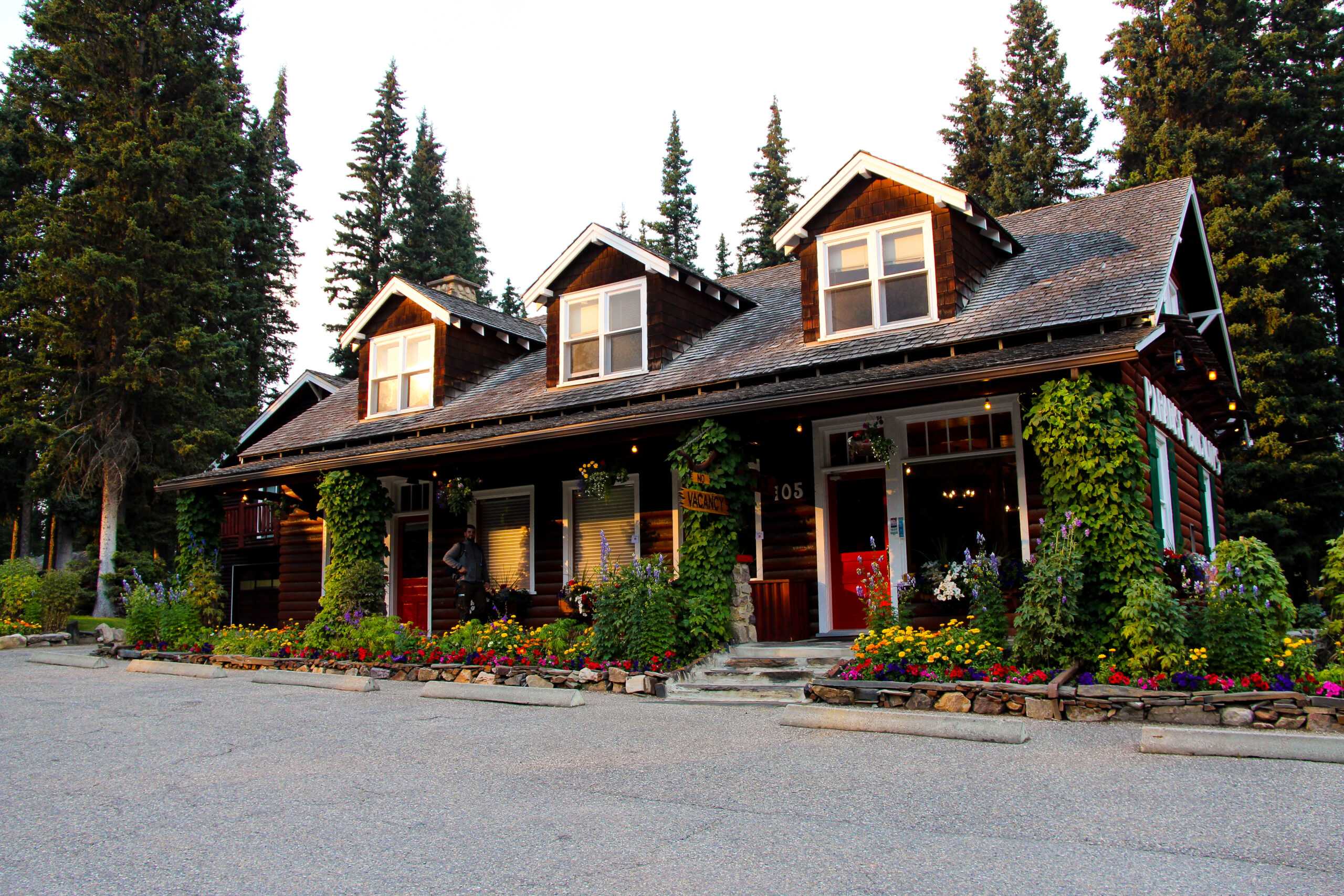

I would always return to this place to stay in, it truly felt like a home away from home.
Camping Lake Louise
It was my first time camping but also probably my last. As I already mentioned earlier, the temperatures dropped around 10 degrees lower than usual for that time of year, and since the tent wasn’t very well insulated, the nights were freezing. No matter how many layers I wore, I just couldn’t get warm enough to sleep comfortably. Let’s just say… I’m more of a cozy-cabin kind of traveler from now on!
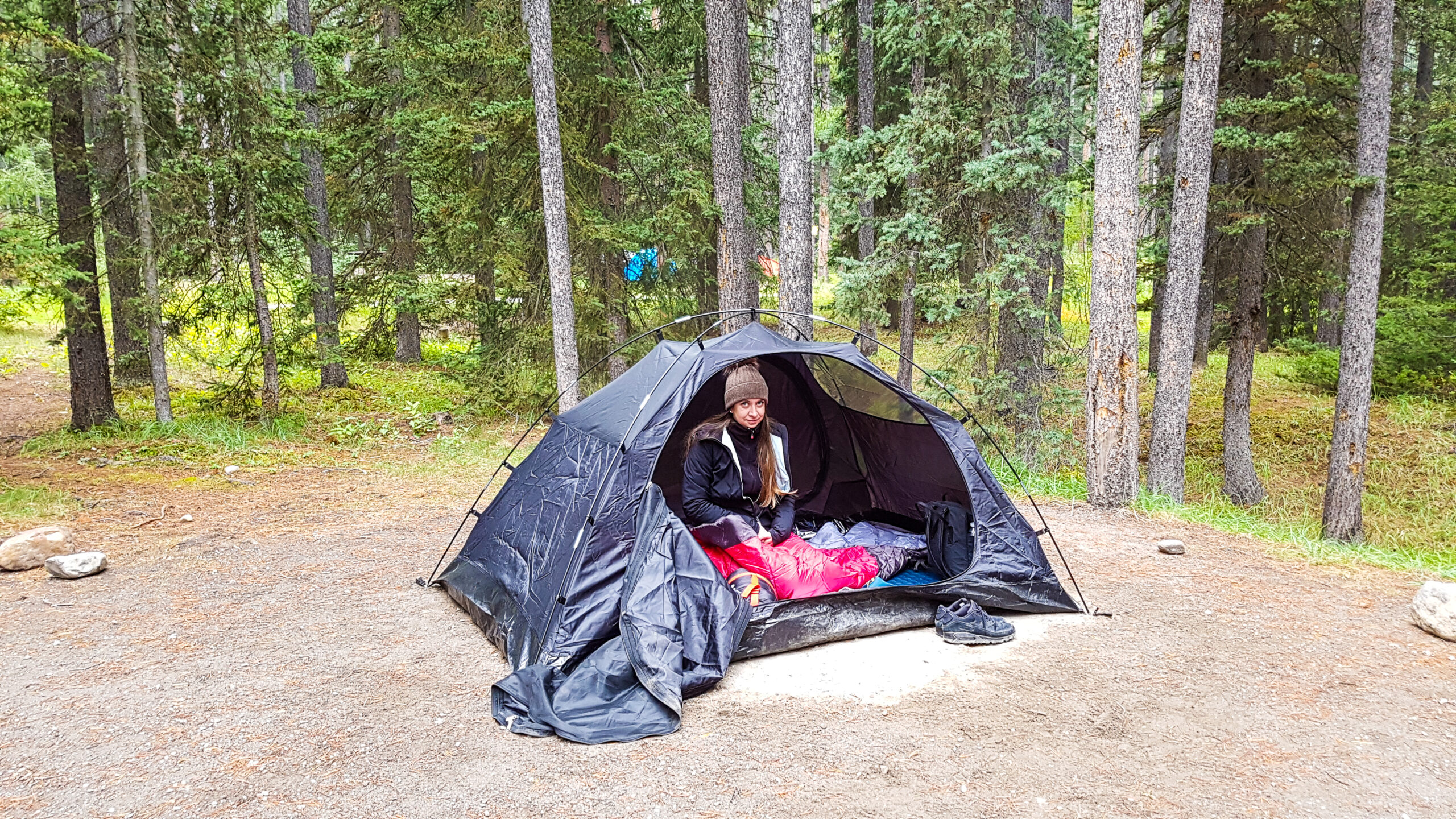
I felt so bad after that first freezing night that I cancelled the second one and booked a hotel room instead, comfort over adventure this time!
But to be fair, aside from the cold, the campground itself was actually really nice. It’s located just a few meters from the Bow River, so as soon as you wake up, you can go for a refreshing dip. The whole area is surrounded by an electric fence to keep bears and other wildlife out, which honestly made me feel a bit safer knowing I wasn’t totally alone out there!
Driving time: Lake Louise to Athabasca Glacier: 1 hour 50 minutes
Icefields Parkway – 1 night
Athabasca Glacier
Located in the heart of the Canadian Rocky Mountains, the Columbia Icefield is the largest icefield in the Rockies of North America. Covering an area of approximately 325 square kilometers, it stretches across both Banff National Park and Jasper National Park.


The most well-known and most visited glacier within the Columbia Icefield is the Athabasca Glacier. Although it’s easily accessible, it is strongly advised not to hike on the glacier by yourself due to hidden crevasses and other dangers. There are guided tours available to explore the toe of the glacier, and special buses called “Ice Explorers” that take you further up. I chose the Full Day Deluxe Tours with Athabasca Glacier IceWalks, which turned out to be a great decision, it takes you deeper onto the glacier than the standard tours, offering a more immersive and unforgettable experience.
Read next: Athabasca Glacier Icewalks in Jasper National Park Canada
Peyto Lake & Bow Summit
Peyto Lake is located along the Icefields Parkway in Banff National Park. It’s a stunning glacier-fed lake sitting at an elevation of 1,860 meters. The lake is nestled in a valley within the Waputik Range, surrounded by Peyto Peak, Mount Jimmy Simpson, and Caldron Peak. What makes Peyto Lake especially famous is its unique shape, which resembles a wolf’s head when viewed from above.
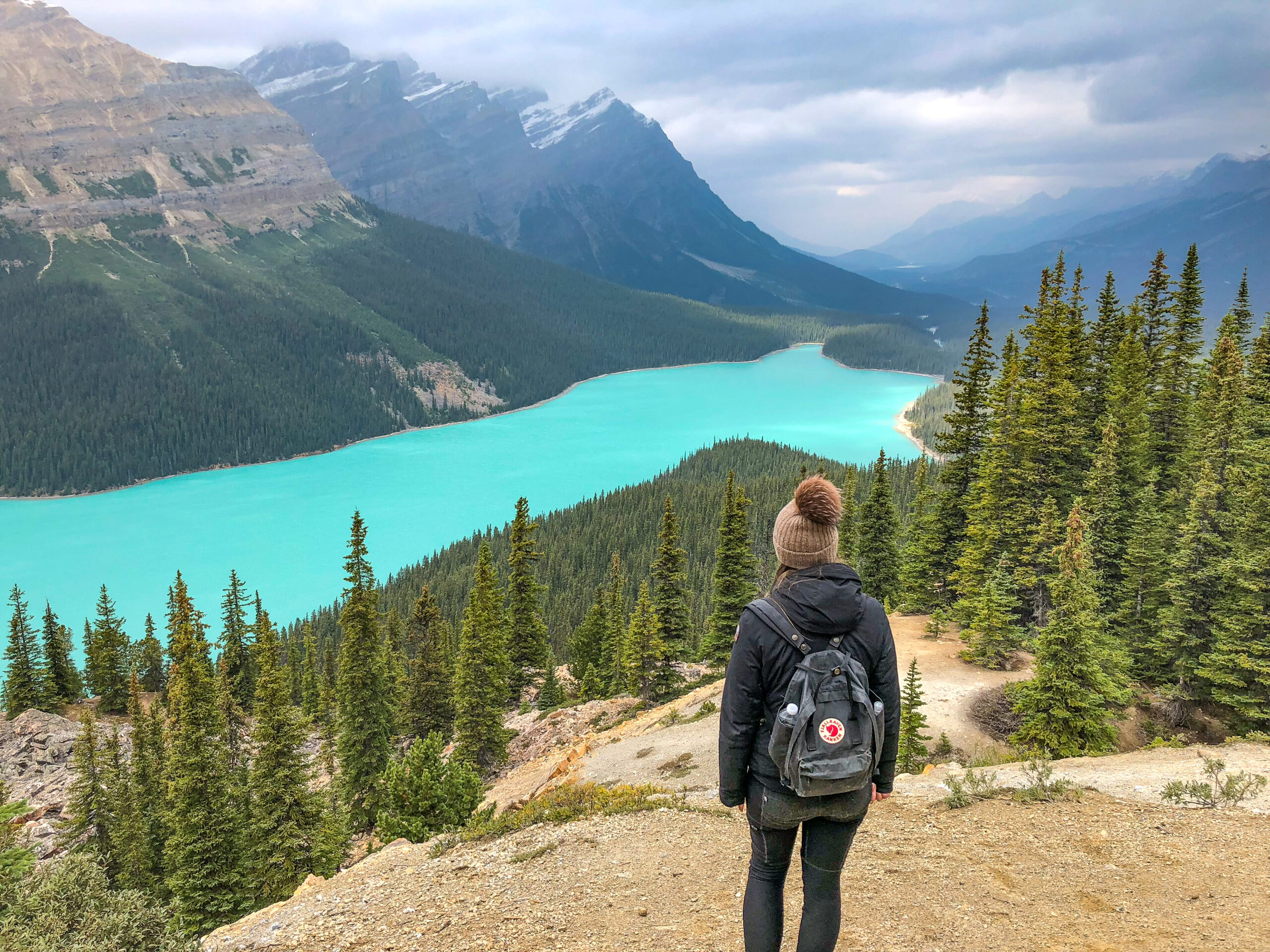
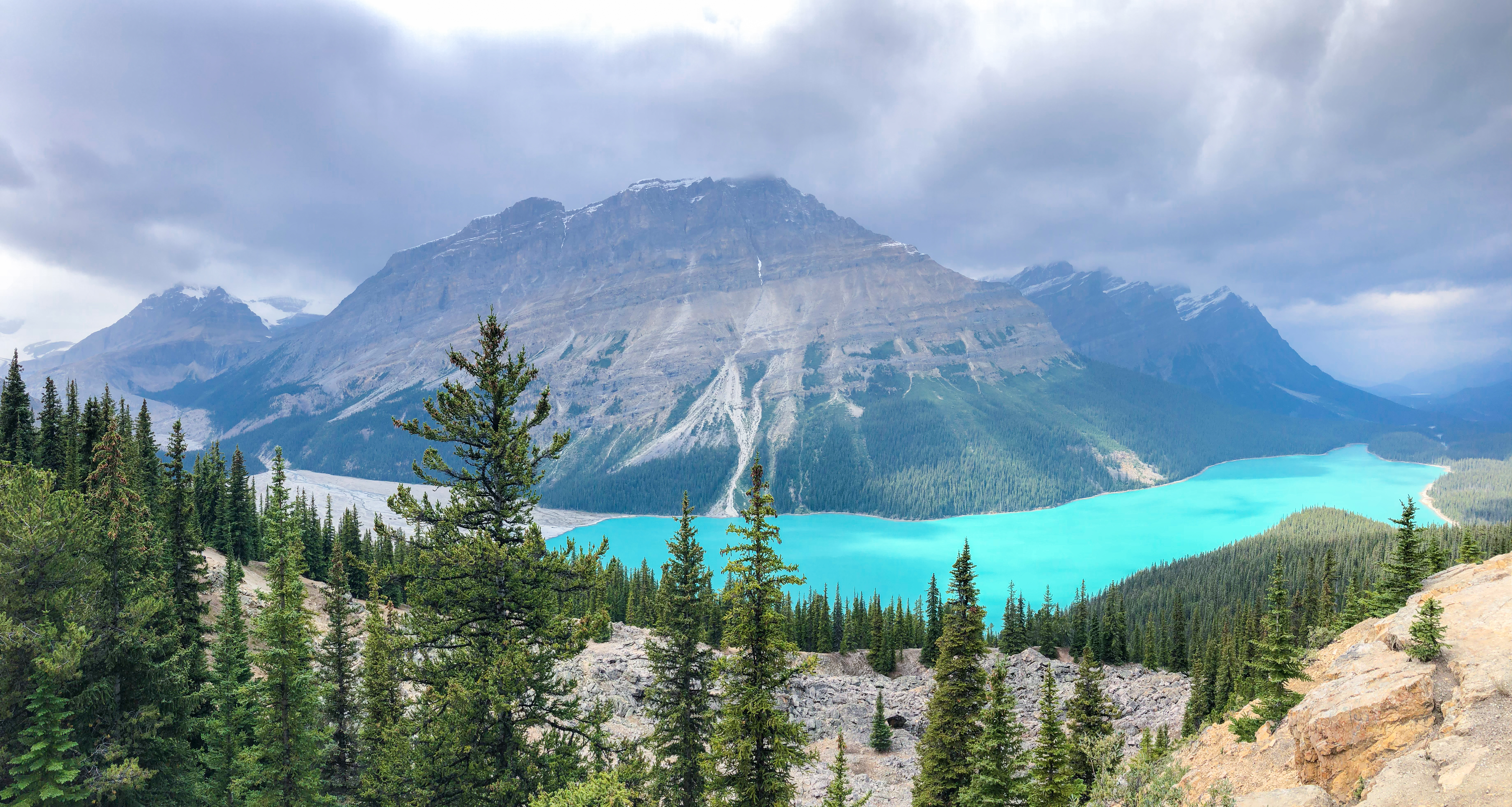
The viewpoint over Peyto Lake is one of the most spectacular ones in Banff National Park and therefore also a popular spot for photographers. With its unique bright and turquoise color, it is, beside Moraine Lake and Lake Louise, one of the most beautiful places in Banff National Park.
The most popular viewpoint is easily accessible via a short uphill walk from the parking lot. It takes about 10 to 15 minutes to reach the viewing platform, and the reward is one of the most iconic and photographed views in the Canadian Rockies.
Hotel
Glacier View Lodge Sunwapta
Whenever you plan to do a tour to the Athabasca Glacier, make sure to stay nearby, as you’ll need to be there by 9:30 in the morning. I opted for the Glacier View Lodge Sunwapta, which turned out to be a really good decision. It’s a small hotel with not that many rooms, but it serves the purpose perfectly — comfortable, convenient, and right across from the glacier.
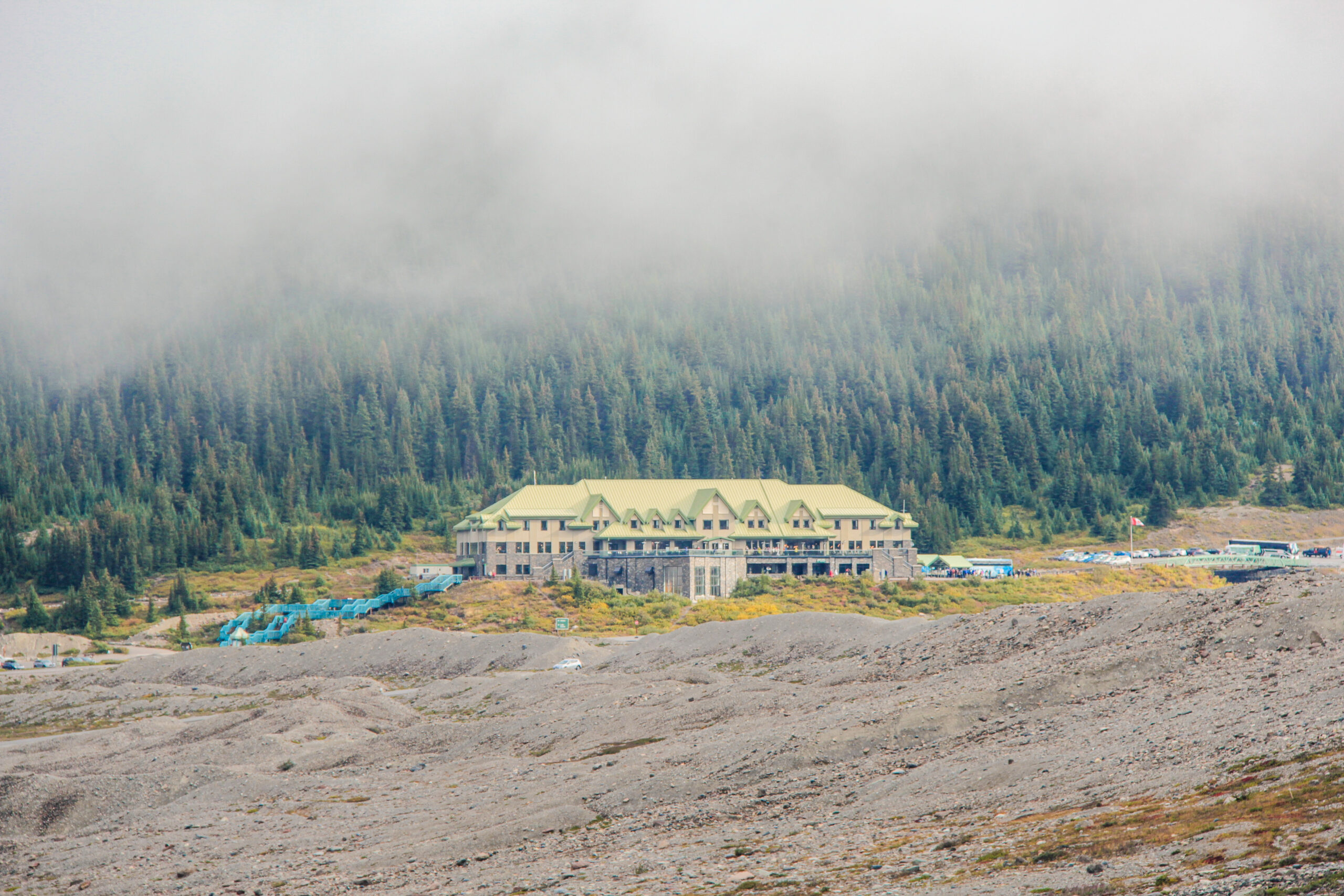
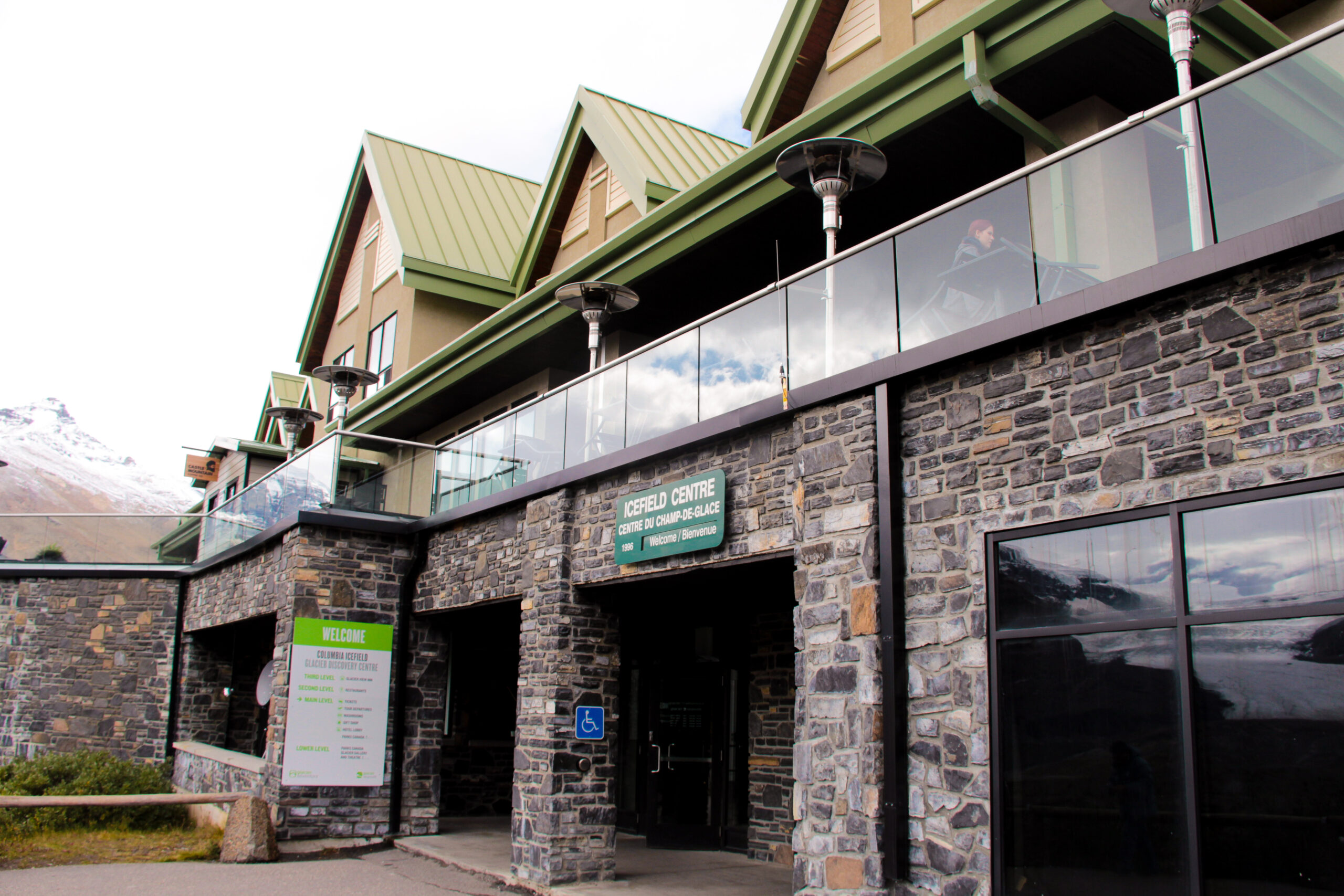
Driving time: Athabasca Glacier to Jasper: 1 hour 15 minutes
Jasper – 3 nights
Mount Edith Cavell
Mount Edith Cavell is an impressive 3,300-meter peak located in Jasper National Park. The mountain was originally known as La Montagne de la Grande Traversée, named by French-Canadian voyageurs who used the nearby Athabasca Pass as a fur trade route. It received its current name in honor of Edith Cavell, a British nurse who helped Allied prisoners escape occupied Brussels during World War I.
Unfortunately, the route to Mount Edith Cavell was closed during the spring and summer of 2019. But if you have the chance to hike some of the trails around the mountain, definitely go for it — the views and natural beauty in that area are absolutely worth it.
Mount Robson
Mount Robson isn’t located in Jasper National Park, or even in Alberta, it’s actually in British Columbia. It’s the most prominent mountain in the North American Rocky Mountains and also the highest peak in the Canadian Rockies, standing tall at 3,954 meters.

As Mount Robson Provincial Park is located right next to Jasper National Park, it’s perfect for a day trip to explore the impressive Mount Robson.
The most famous trail here is definitely the 42 km (round-trip) hike to Berg Lake. With seven campgrounds along the way, you can take your time and truly enjoy the stunning scenery as you make your way to the lake. Just don’t forget to register at the Mount Robson Visitor Centre before you start your hike!
When you follow the Berg Lake Trail for about 4.5 km (one way), you’ll reach Kinney Lake, which is absolutely stunning in its own right. It’s an easier hike and totally worth it for the views. Be sure to bring some snacks and take a break by the lake, it’s the perfect spot to relax and soak in the scenery.
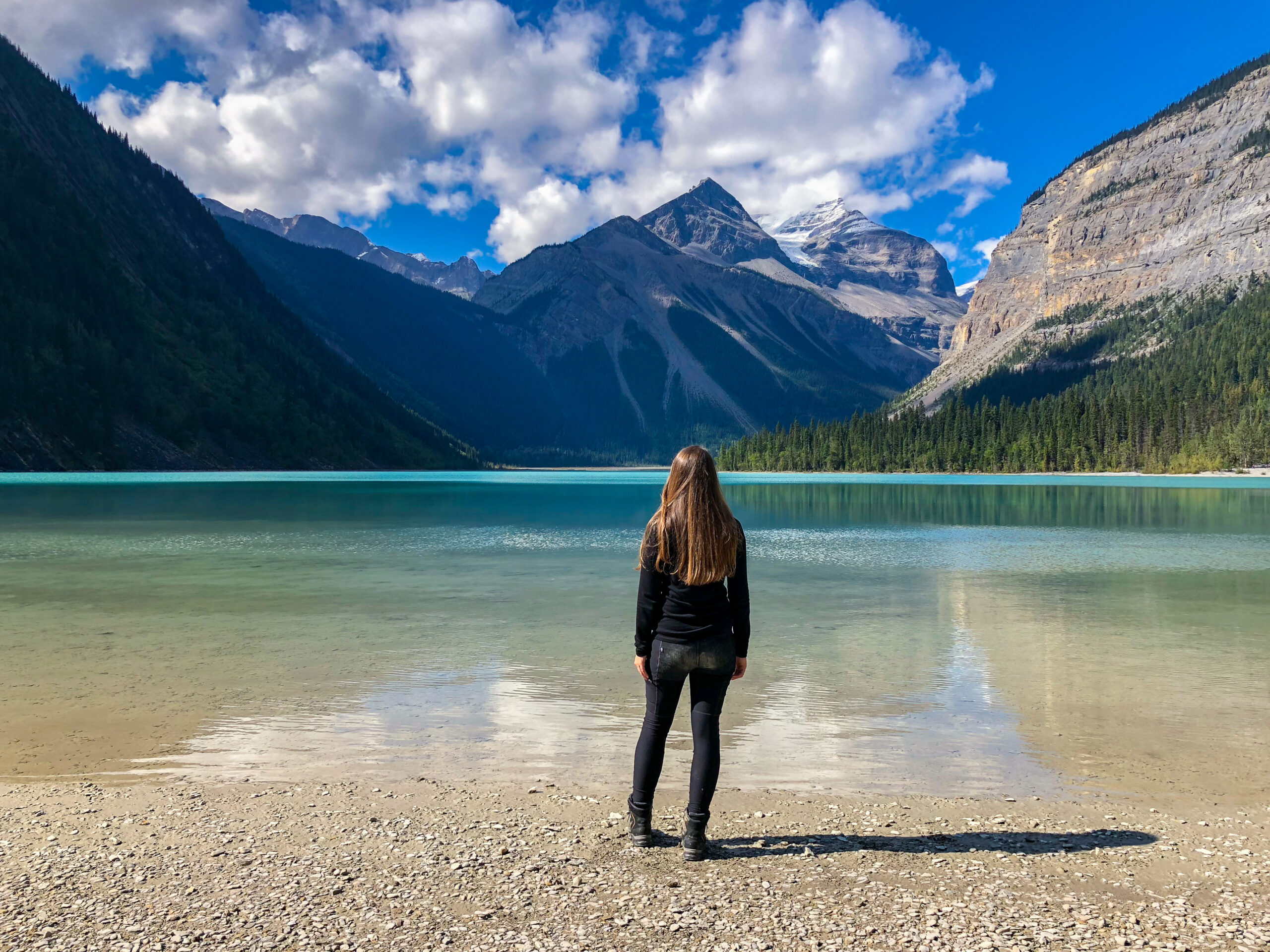

Miette Hot Springs
Another one of the three hot springs in the area of Banff and Jasper National Parks—beside Banff Upper Hot Springs and Radium Hot Springs, is Miette Hot Springs. Just like the Banff Upper Hot Springs, Miette was originally discovered and used by First Nations people, who introduced members of the Hudson’s Bay and North West Companies to three springs located on Sulphur Creek, a tributary of the Fiddle River, in the 1800s.
In 1910 and again in 1930, bathhouses were constructed, and a proper road was eventually built to allow easier access. The facilities as they are known today date back to 1986. Miette Hot Springs are a beautiful and relaxing stop in the heart of the mountains, with some of the hottest mineral water in the Canadian Rockies.


When it comes to hot springs, I personally prefer Miette Hot Springs over the Banff Upper Hot Springs. The location is far less crowded, which makes the experience feel more peaceful and authentic. It’s the perfect way to relax and unwind after a long day of hiking.
Pyramid Lake
Pyramid Lake is a stunning kidney-shaped lake located in Jasper National Park, nestled at the foot of the iconic Pyramid Mountain. This picturesque spot is ideal for a variety of activities depending on the season. During the summer, it’s a fantastic place to go canoeing and swimming, while in the winter, it transforms into a popular spot for ice skating.
What makes Pyramid Lake truly special is its ability to capture breathtaking reflections of the mountains when the water is calm. These perfect mirror-like reflections create a serene and unique atmosphere, making it one of the most scenic places to visit in Jasper National Park. Whether you’re looking for adventure or simply a tranquil place to take in the views, Pyramid Lake offers both.
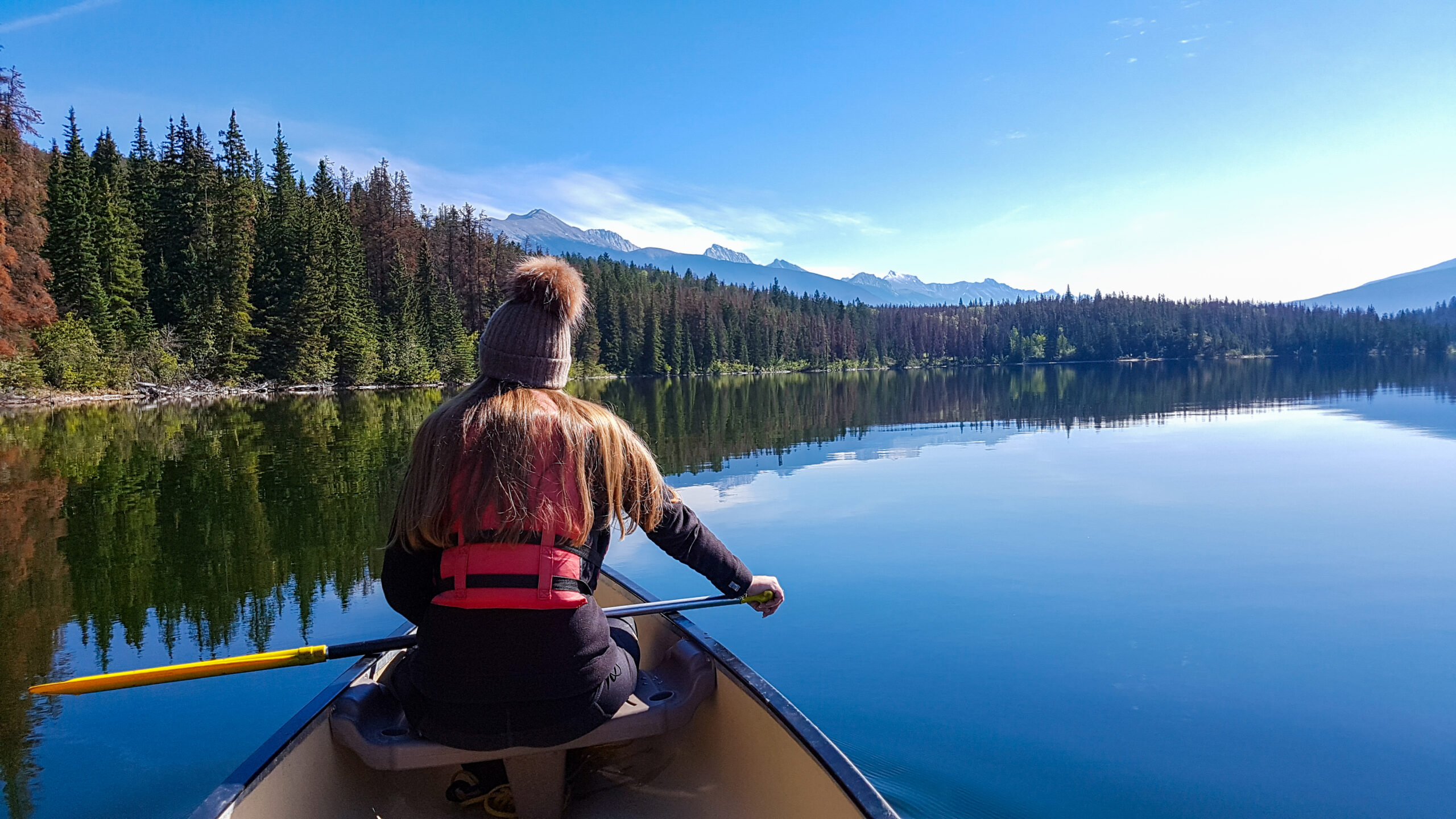

There’s even a charming little island in Pyramid Lake, known as Pyramid Island. You can easily reach it by canoe, which adds a bit of adventure, or simply by walking across a wooden bridge that connects the island to the mainland. Once on the island, you’ll find picnic spaces, making it the perfect summer destination for a relaxing day with a stunning view.

If you’re looking for a place to stay near Pyramid Lake, the Pyramid Lake Resort is hands down the best option. Its location is ideal, offering easy access to the lake and surrounding nature, along with comfortable amenities to make your stay enjoyable. Whether you’re there to explore the lake, hike the nearby trails, or simply unwind, this resort provides the perfect home base.
Maligne Lake
About a 40-minute drive from Jasper, you’ll find Maligne Lake, a stunning glacial lake known for its azure-blue waters, dramatic peaks, and three visible glaciers. One of the most iconic and photographed views around the lake is of Spirit Island, a tiny, picturesque island nestled in the middle of the lake. The island, surrounded by towering peaks, offers a serene and almost mystical scene.
During the summer months, you can take the Maligne Lake Cruise, which will transport you directly to Spirit Island. The cruise is a fantastic way to experience the lake’s natural beauty from a unique perspective, as you glide across the crystal-clear waters, with panoramic views of the surrounding mountains and glaciers. It’s definitely a must-do activity if you’re visiting the area!

Maligne Canyon
Maligne Canyon is the deepest canyon in Jasper National Park, with depths reaching up to 50 meters at certain points. It’s a truly breathtaking natural wonder, and it offers unique experiences throughout the year.
In winter, Maligne Canyon becomes even more spectacular. You can join a guided Icewalk, where you’ll walk along the canyon’s frozen floor, surrounded by dramatic ice formations and frozen waterfalls. It’s an otherworldly experience, with the frozen waterfalls and icy textures of the canyon walls providing a stunning contrast to the summer hikes along the canyon’s six bridges.
Unfortunately we didn’t have the chance to visit Maligne Canyon this time, but it’s definitely something to look forward to on our next trip.
Medecine Lake
Medicine Lake is located about a 40-minute drive from Jasper and is approximately 7 km long. It is a relatively shallow lake and is situated about 20 km from the town of Jasper, making it easy to visit. Medicine Lake is unique because, during the summer months, it often appears to „disappear“ as the water levels drop due to the underground springs and rivers that feed it. This gives the lake a mysterious quality, with the water levels fluctuating seasonally. It’s a peaceful and scenic spot with beautiful views of the surrounding mountains, making it a great stop on the way to Maligne Lake.
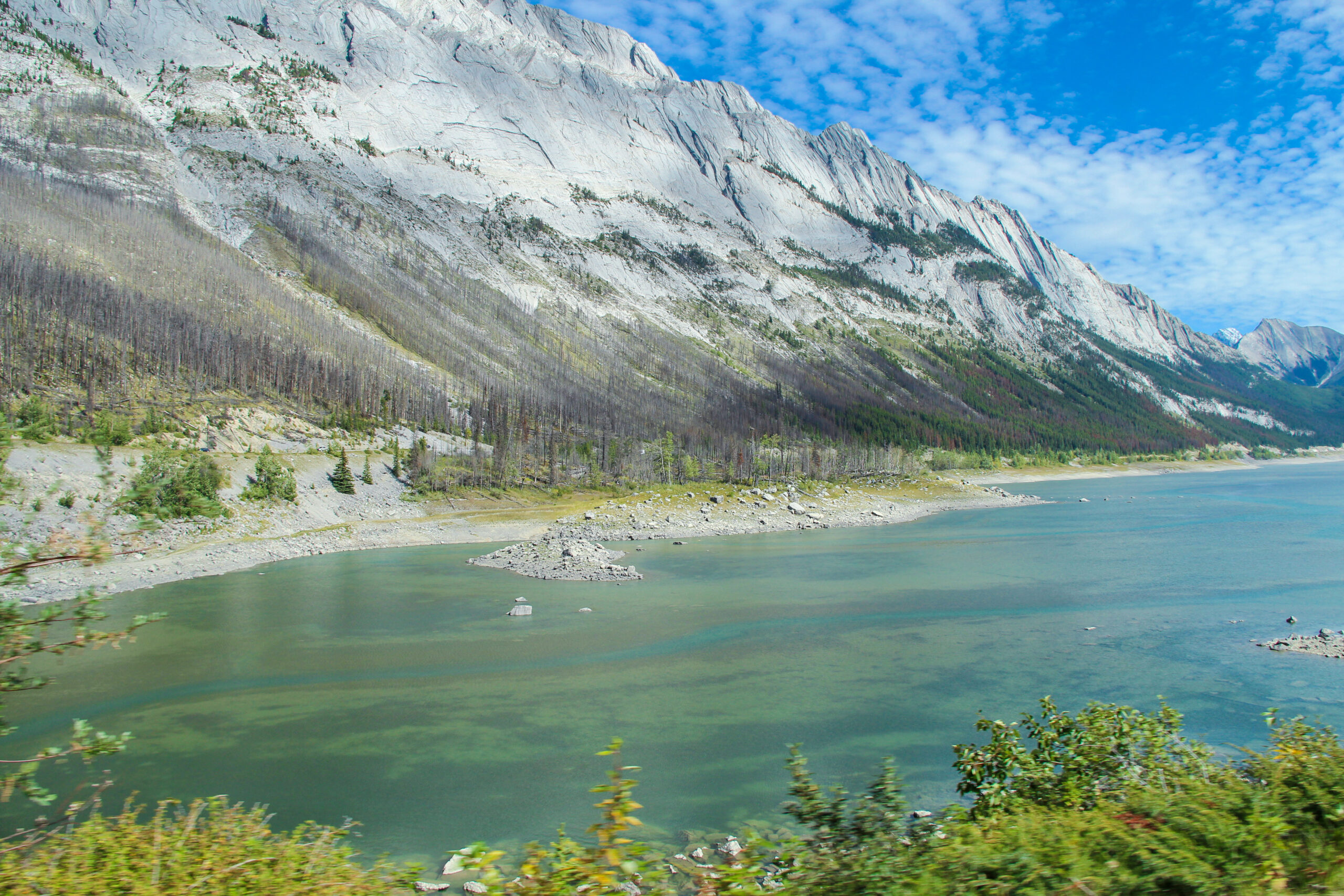

Geologically, Medicine Lake is not actually a true lake but rather an area where the Maligne River backs up. The water then mysteriously disappears into the underground through a series of sinkholes and subterranean channels, giving it the appearance of a „disappearing“ lake. This natural phenomenon occurs as a result of the area’s unique geological structure.
Athabasca Falls
Athabasca Falls, located in Jasper National Park, is a stunning waterfall fed by the Athabasca River. At 23 meters high, the falls are known for their powerful flow, especially during spring melt. Though not the tallest, the sheer volume of water cascading through a narrow gorge creates a dramatic and noisy spectacle.


Easily accessible from the Icefields Parkway, Athabasca Falls offers several viewing platforms and walking trails for visitors. The most popular trail takes you to the base of the falls, where you can feel the mist and hear the thunderous roar of the water. It’s a popular spot for photography, especially during early mornings or evenings for better light and fewer crowds.
For safety, stay on marked trails as the area around the falls can be slippery and dangerous. Overall, Athabasca Falls is a must-see for anyone visiting Jasper National Park.
Hotel
Pyramid Lake Resort
Pyramid Lake Resort is the perfect starting point for your adventures in Jasper National Park. This fully renovated, chalet-style alpine resort offers stunning views of the surrounding mountains, making it an ideal base for exploring the area.
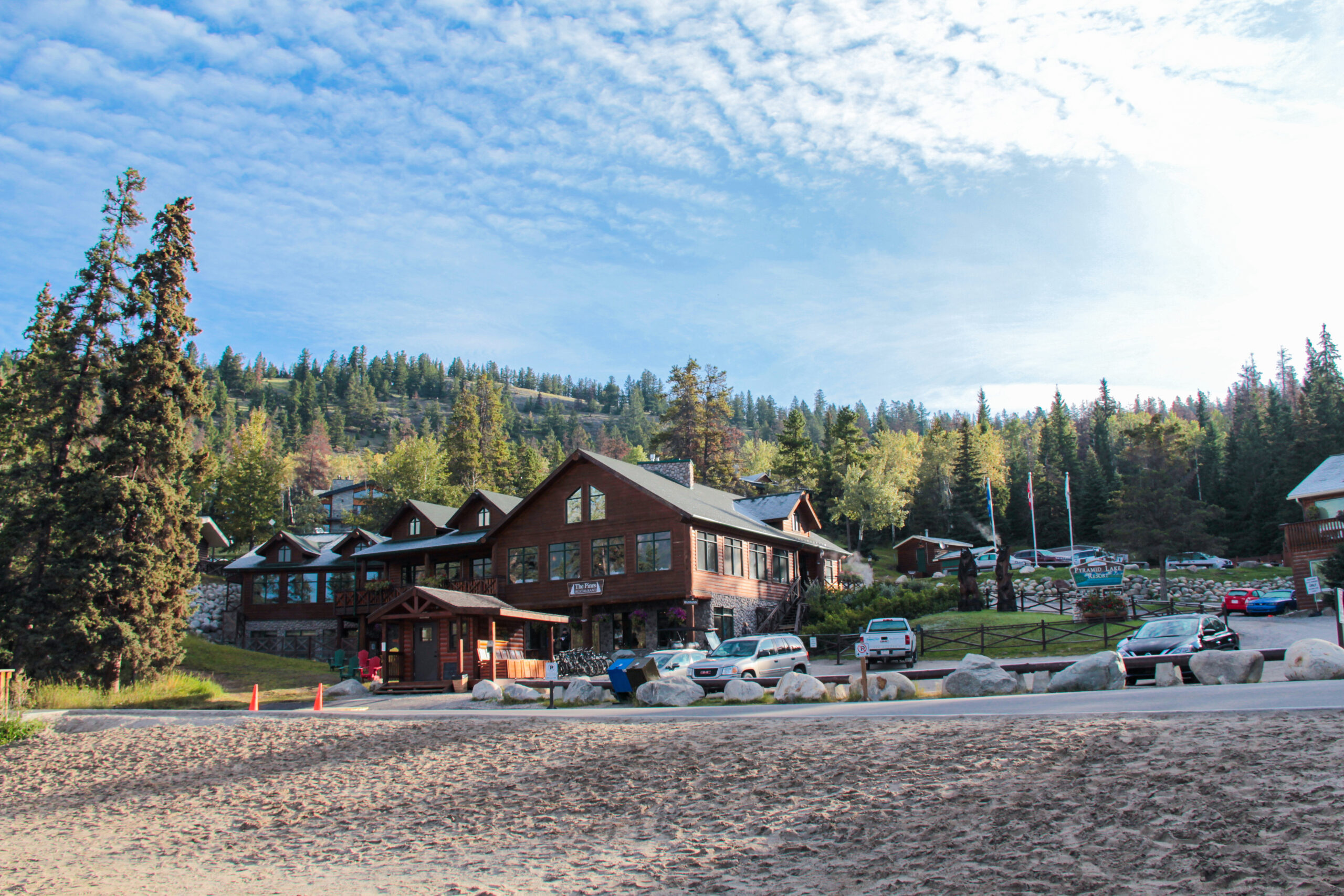
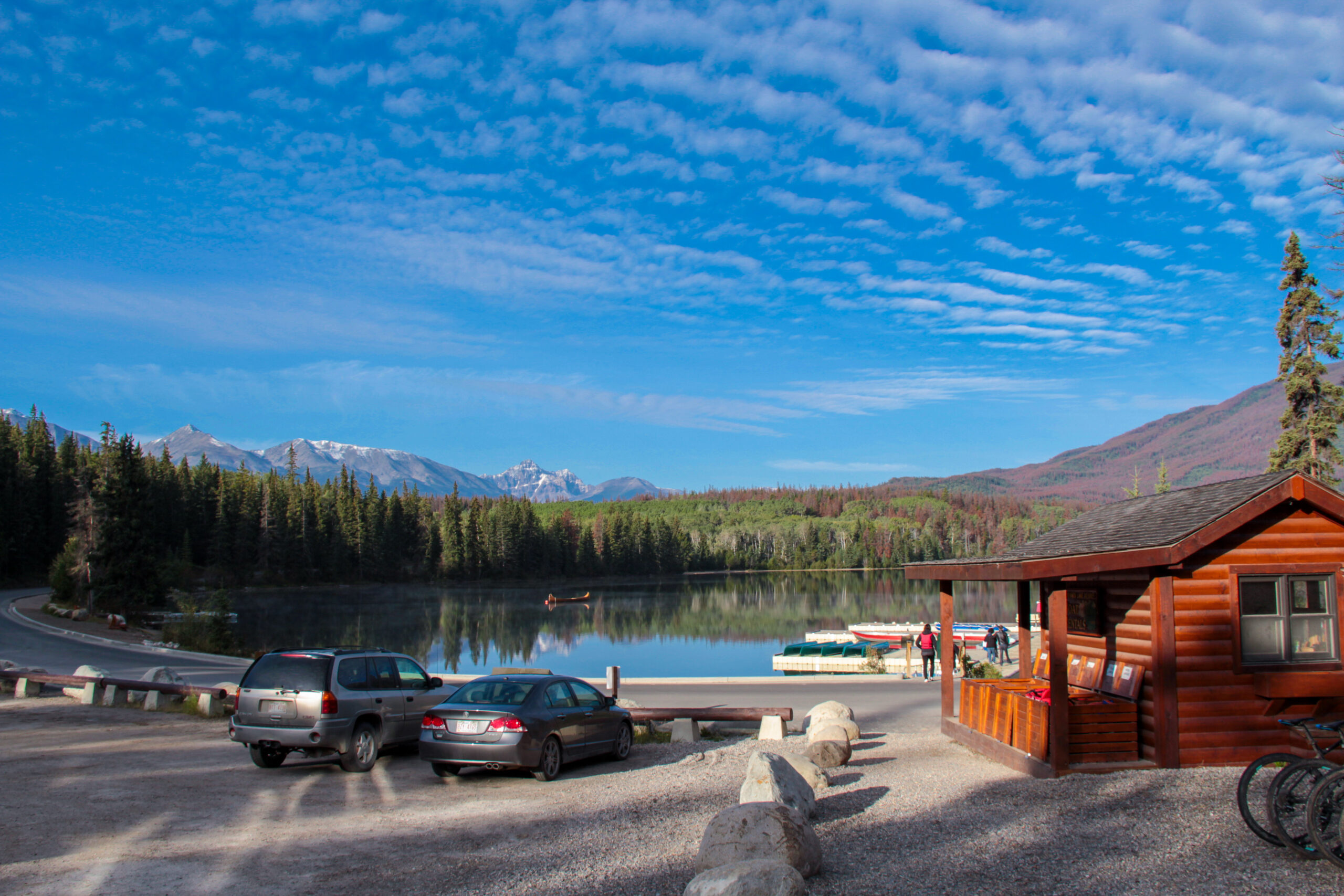
With the lake right in front of the hotel, you can step outside and dive straight in. Afterward, you can warm up in their relaxing hot tub. I highly recommend this hotel, it’s surrounded by nature, has a great restaurant, and offers a peaceful, scenic experience.
Fairmont Jasper Park Lodge
This is the hotel I booked in desperation during that cold night camping at Lake Louise because I couldn’t bear another night in the tent. I had originally planned to stay at Camground Wapiti but decided to cancel. However, if you enjoy camping, go for it!

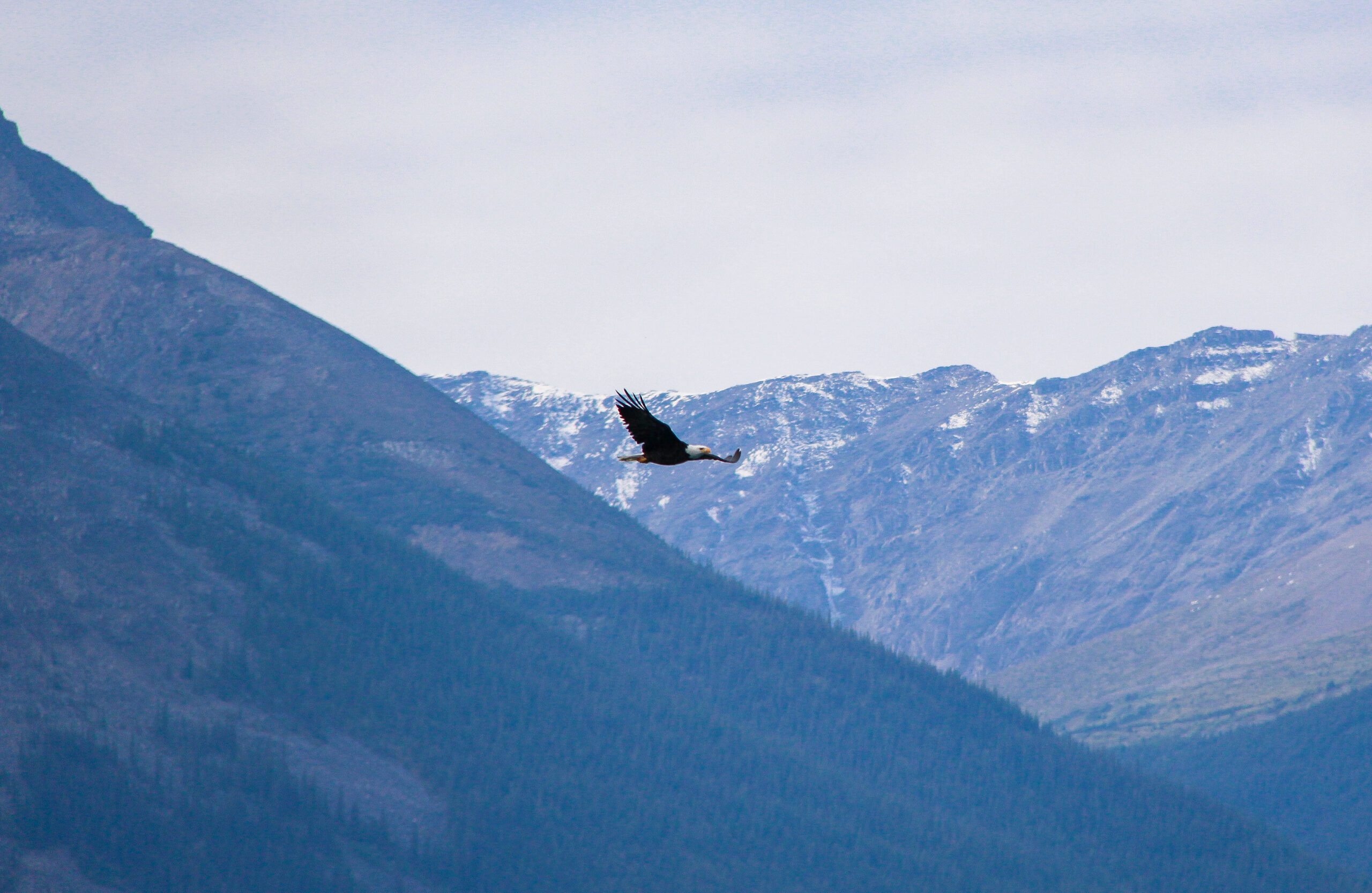
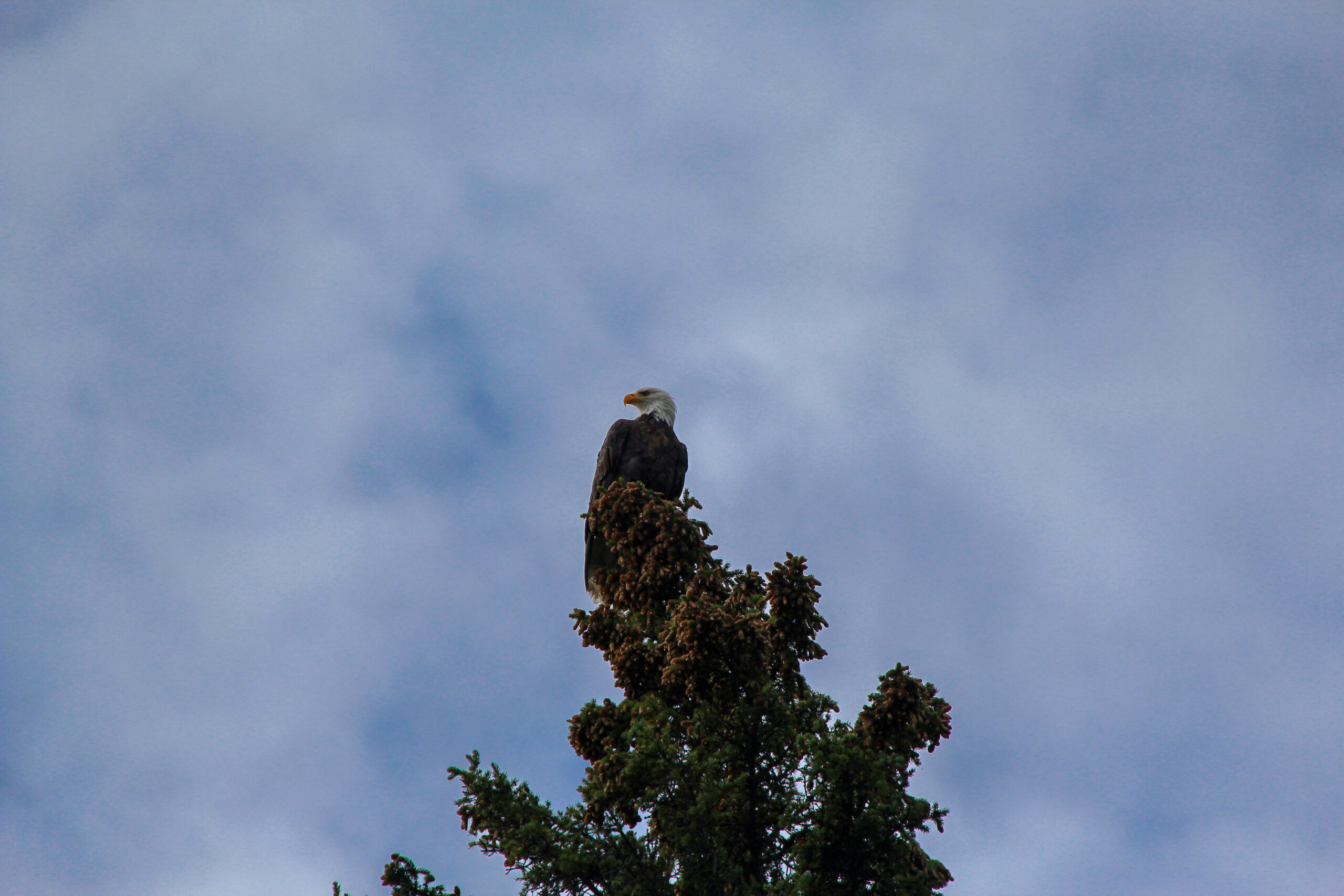
Originally known as „Tent City,“ the resort was made up of a series of tents, which served as temporary accommodations for guests exploring the newly established Jasper National Park. The main building was established in 1921 by Canadian National Railway. In 1952, the railway company undertook a massive renovation of the resort’s main building. Today, Fairmont Jasper Park Lodge is owned by the Ontario Municipal Employees Retirement System, but it remains part of the Fairmont family of hotels and resorts.
I really enjoyed staying at Fairmont Jasper Park Lodge because you’re completely surrounded by nature and wildlife. A major highlight for me was seeing a bald eagle soaring over the resort.
Driving time: Jasper to Banff: 3 hours 30 minutes
Banff – 1 night
We spent our last day in Banff shopping for souvenirs and indulging in all the things we wouldn’t be able to get at home.
Hotel
Royal Canadian Lodge
The Royal Canadian Lodge was the last hotel I stayed at on my road trip through West Canada. Although I didn’t spend much time there, it was the perfect place to pack up my suitcases and wrap up the trip..

The Royal Canadian Lodge is owned and operated by the Charltons family, a fifth-generation Banff family. They have been providing accommodation in Banff National Park since 1949, starting with Banff’s first year-round tourist accommodation, Charlton Cedar Court. In 2000, they replaced their second property, Evergreen Court, with the outstanding Royal Canadian Lodge. The hotel maintains high standards, with room renovations completed in 2019.

Canadian Road Trip Conclusion
I simply fell in love with Canada. It offers everything you could want on a trip: hiking, swimming, shopping, and plenty of opportunities to relax. One of the biggest highlights, besides all the breathtaking views, was definitely the wildlife. I feel incredibly lucky to have seen a bear and a moose, along with all the chipmunks and birds. It was an unforgettable experience.
